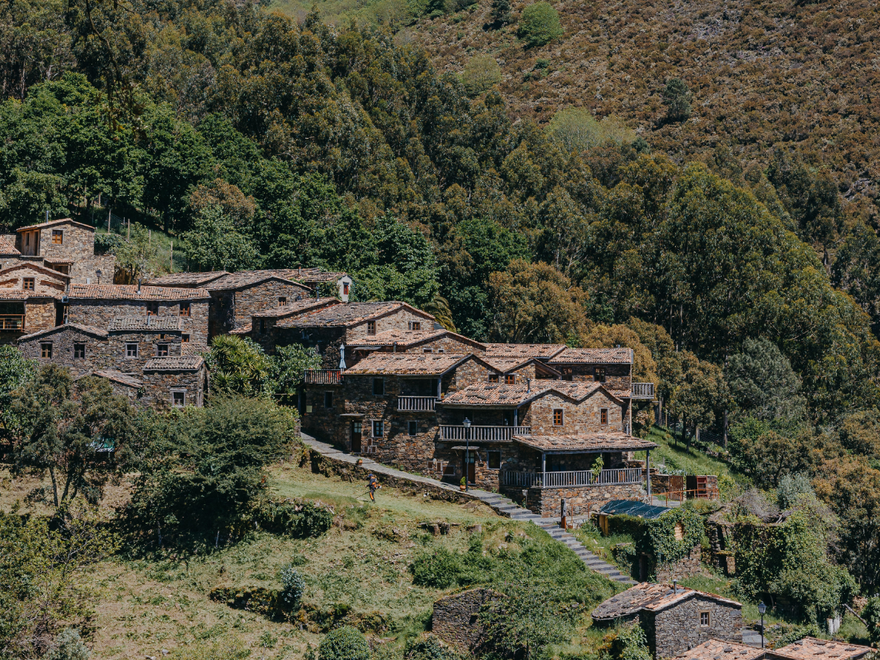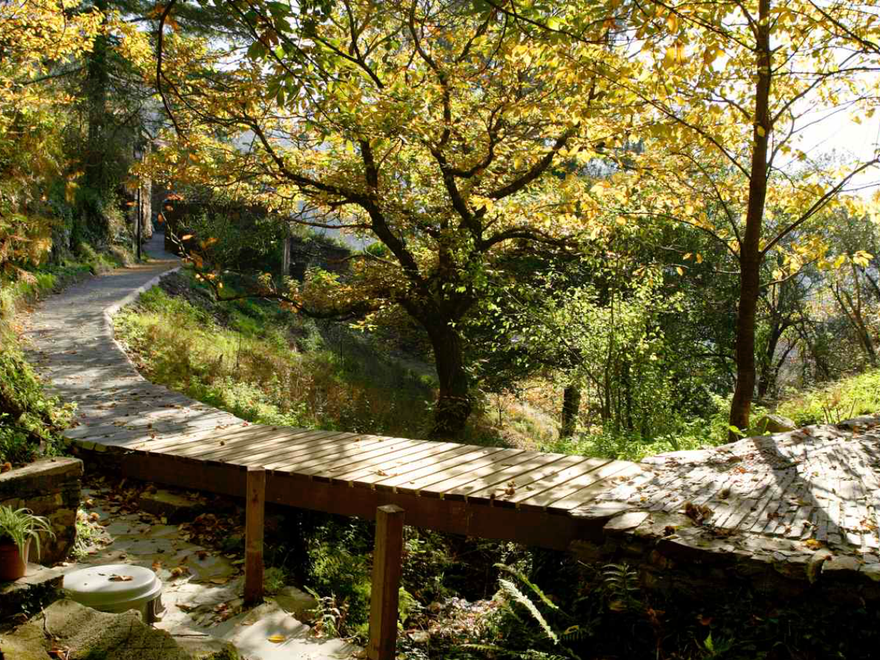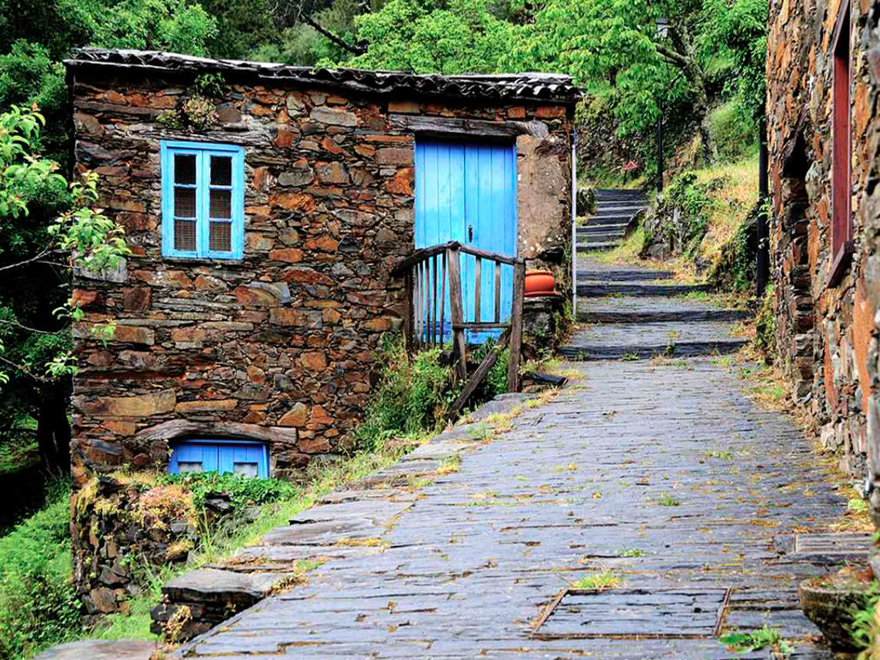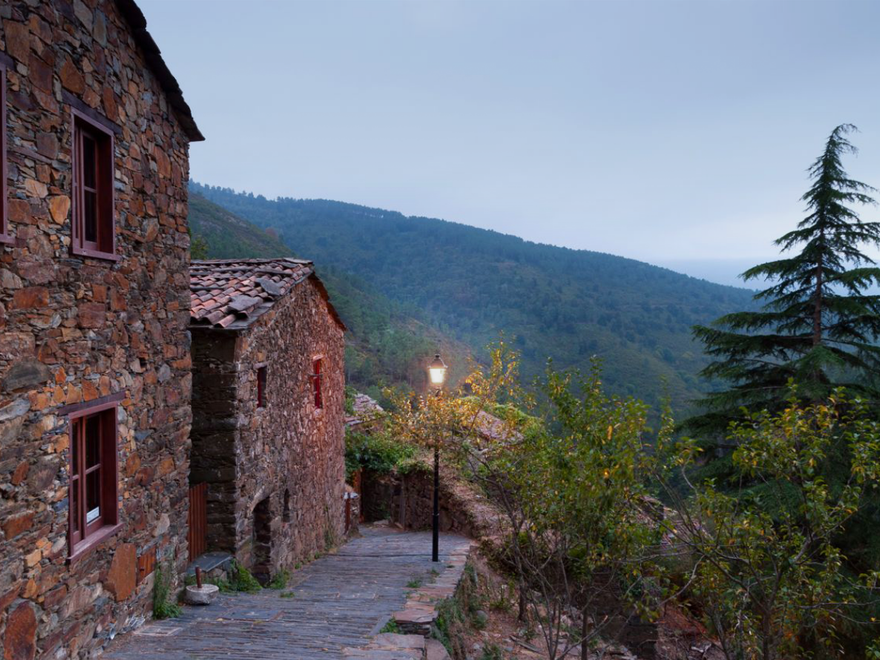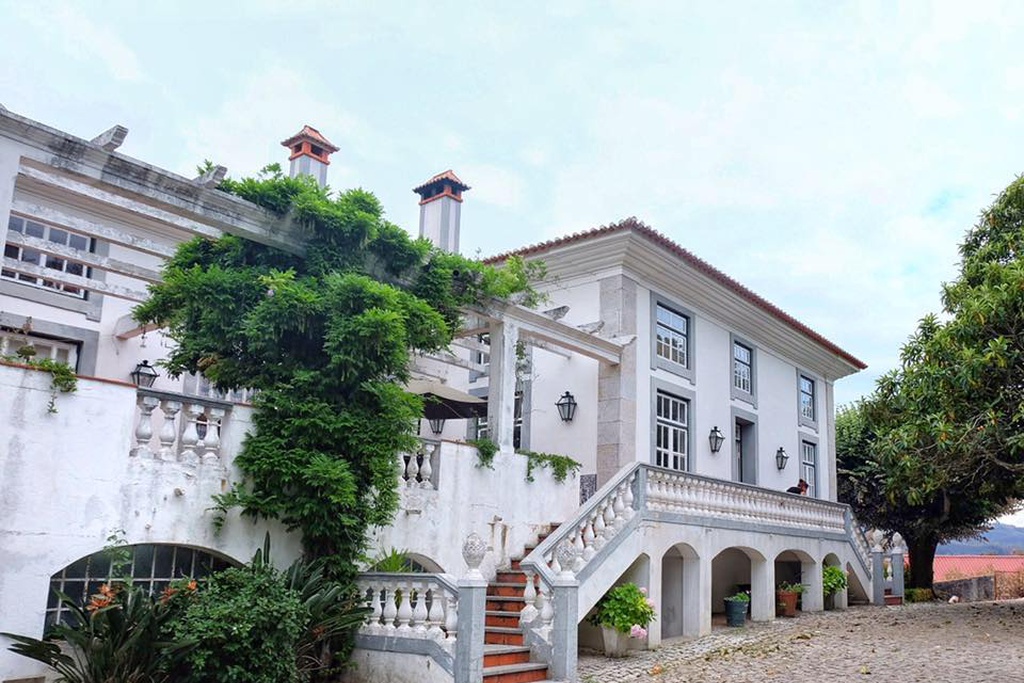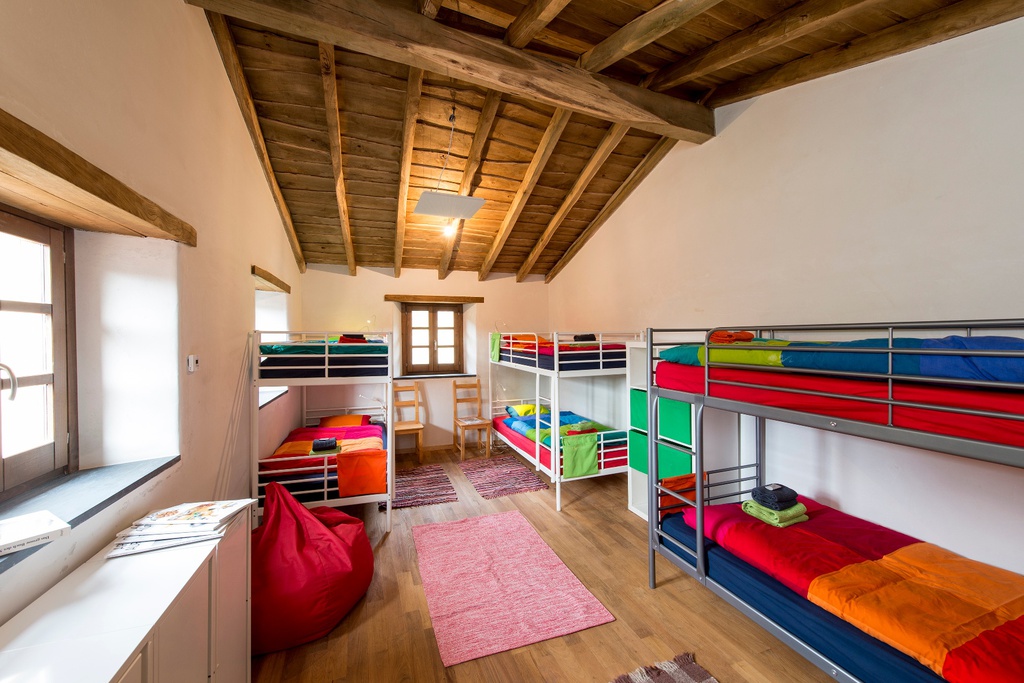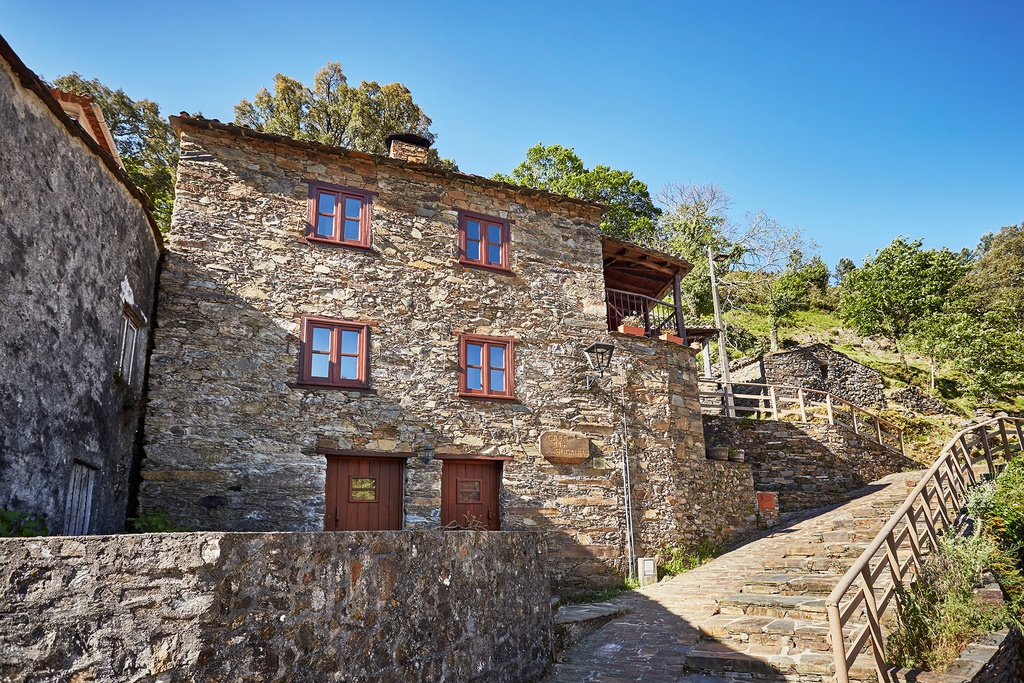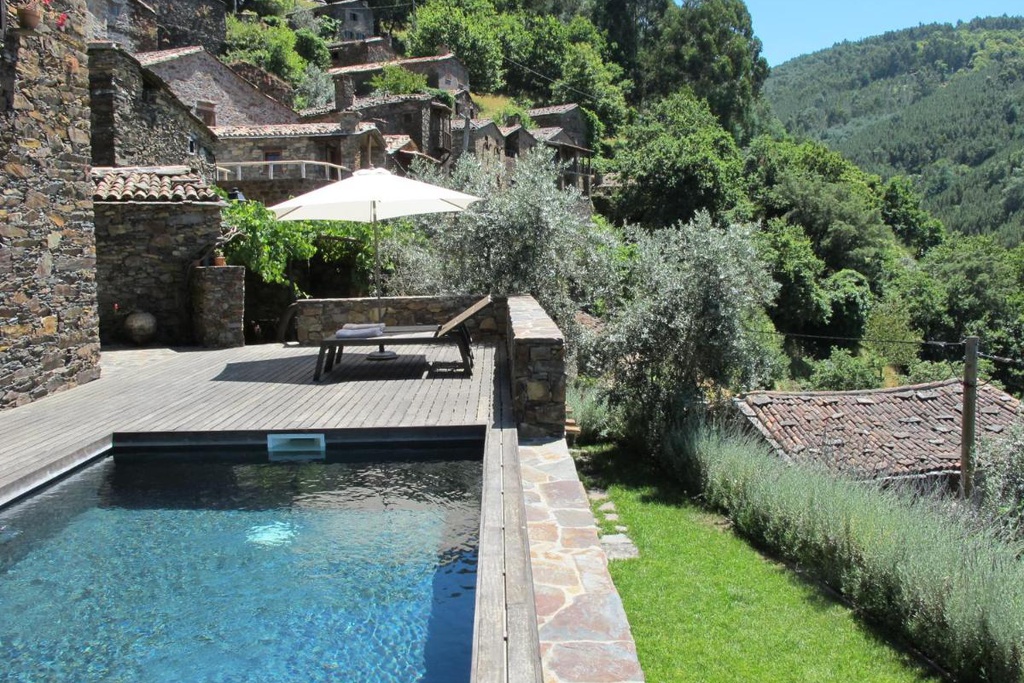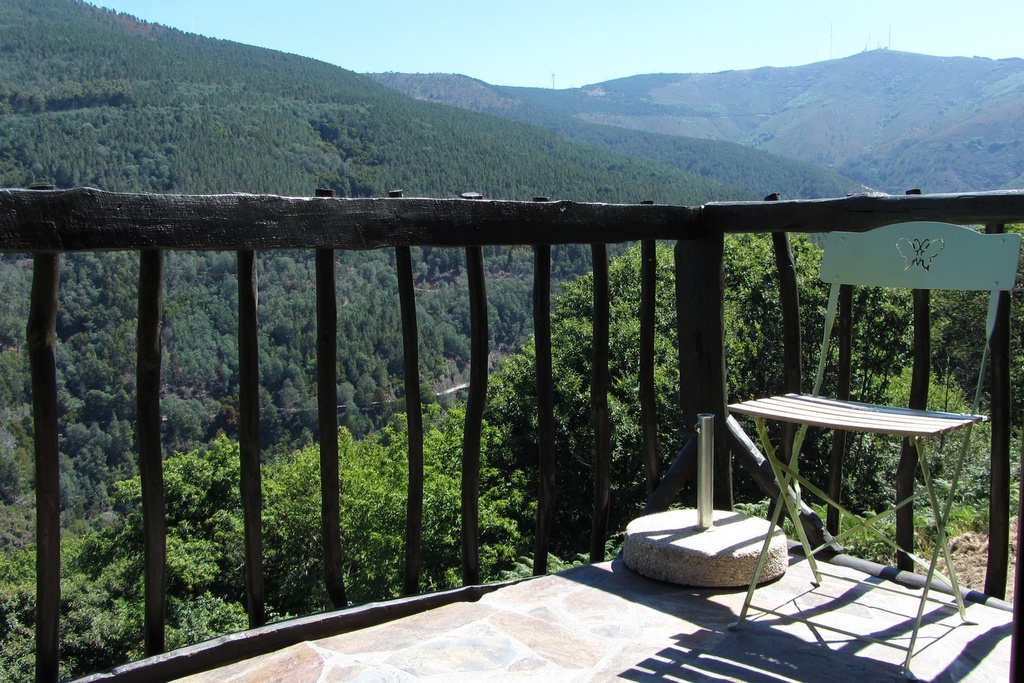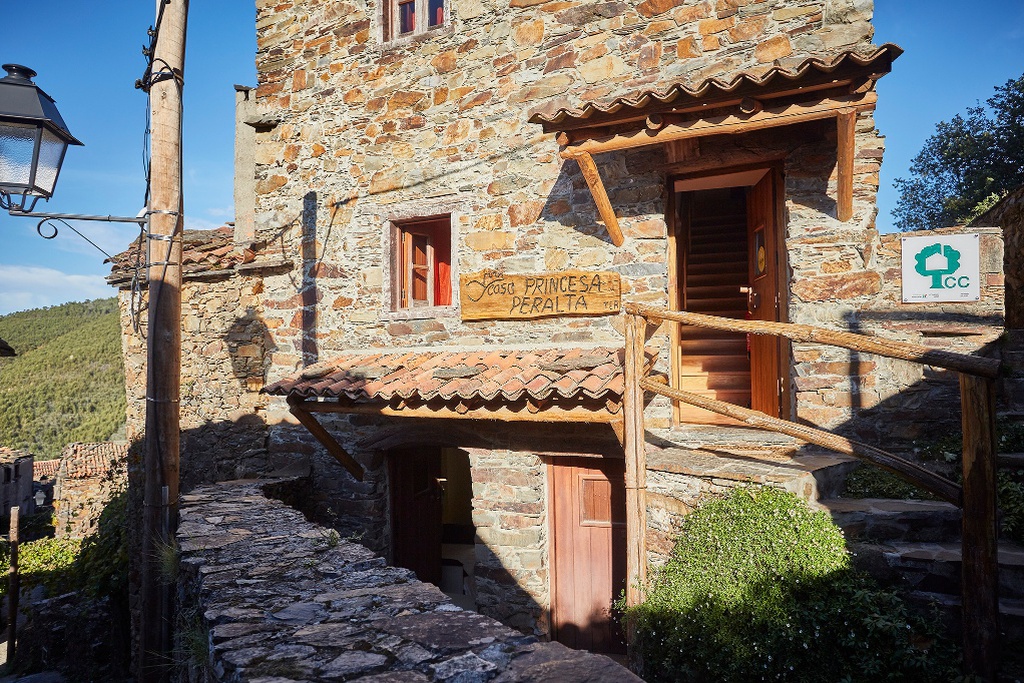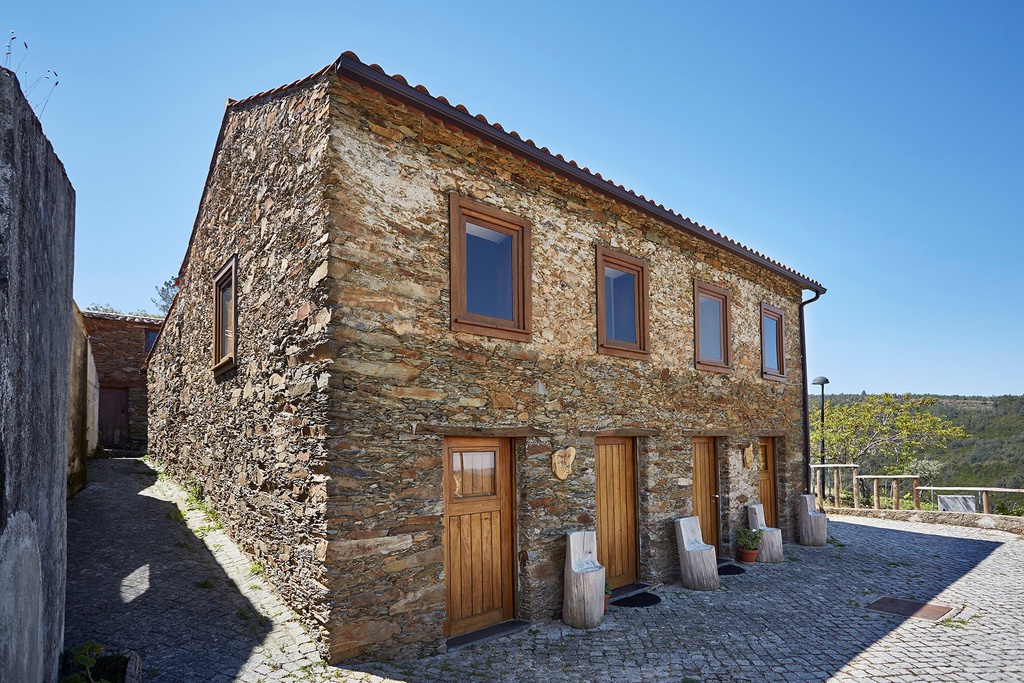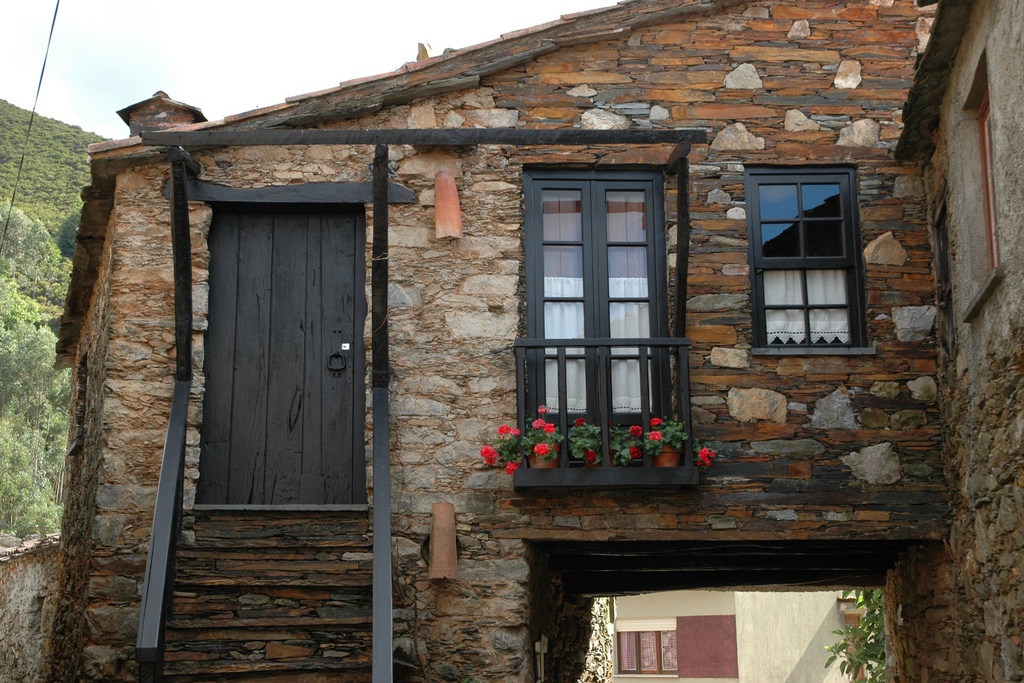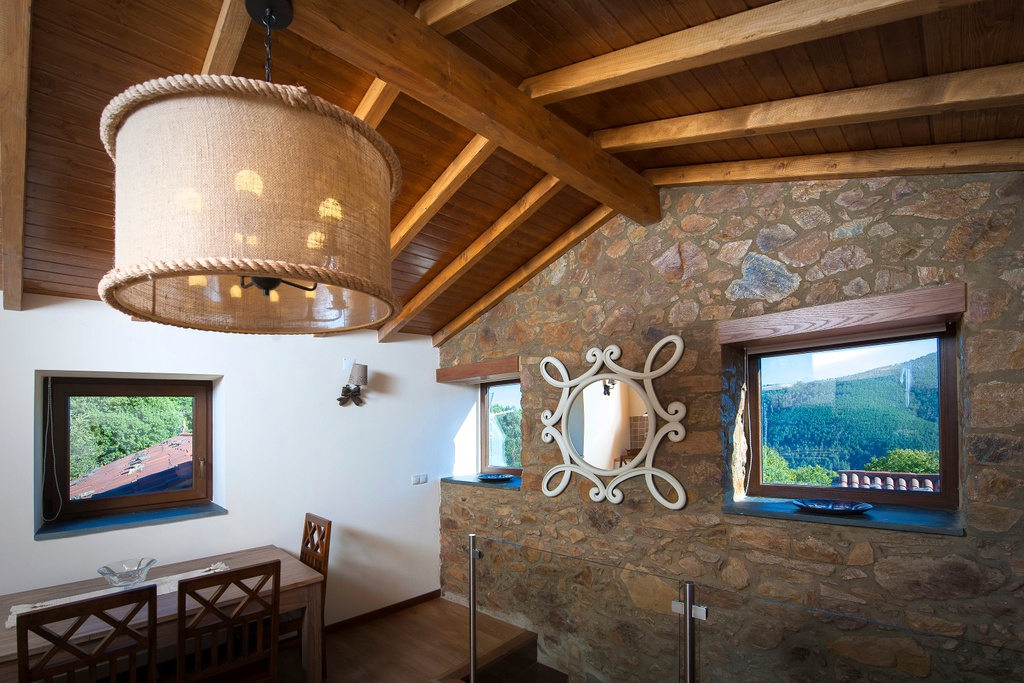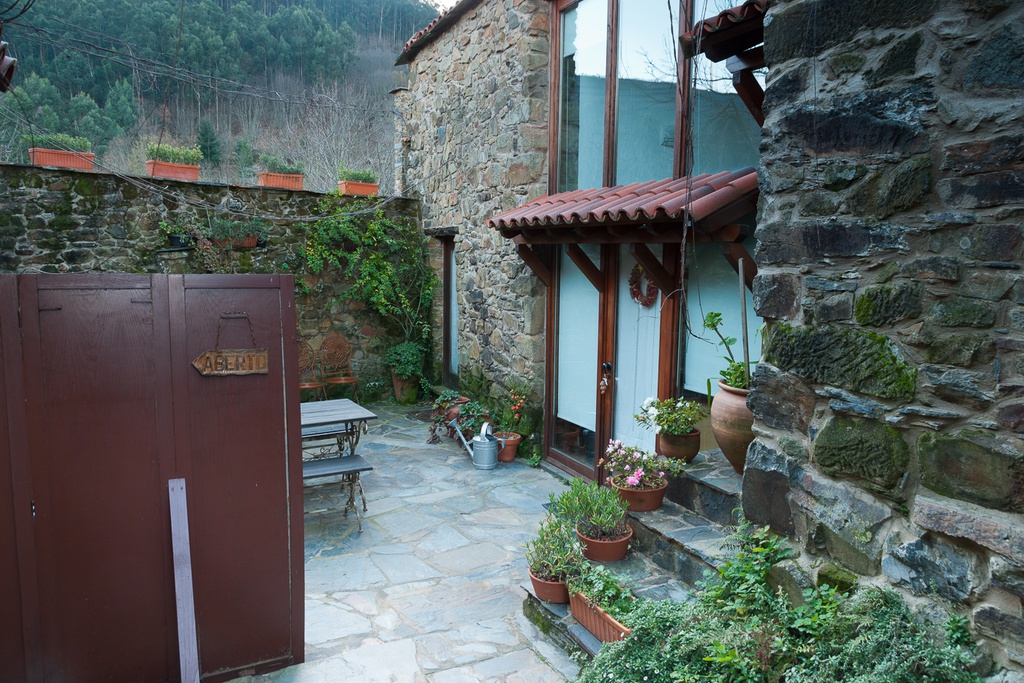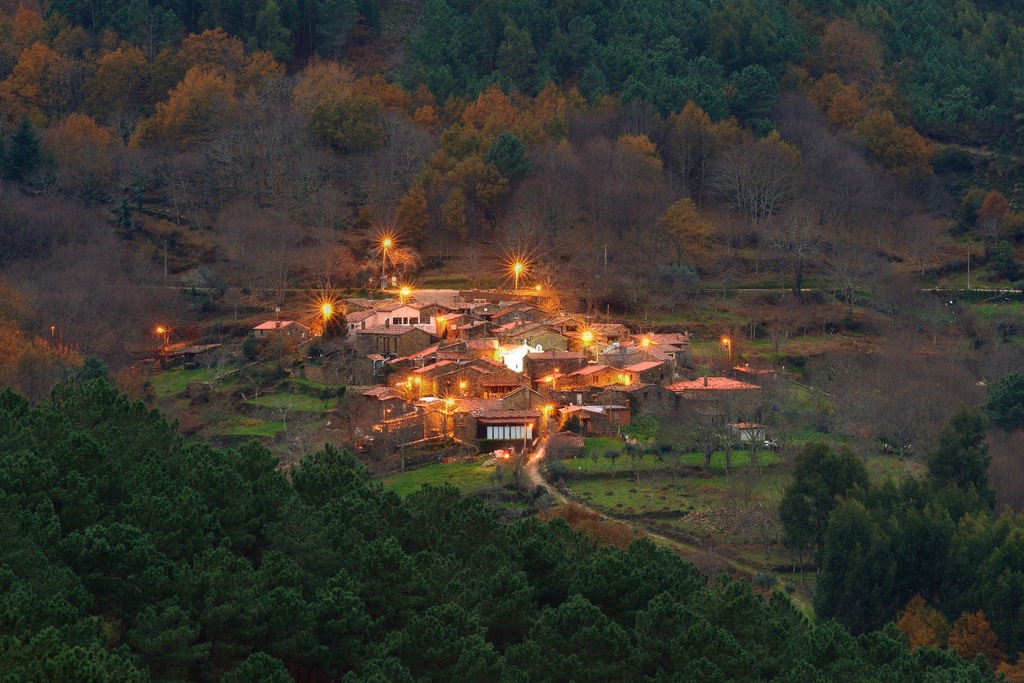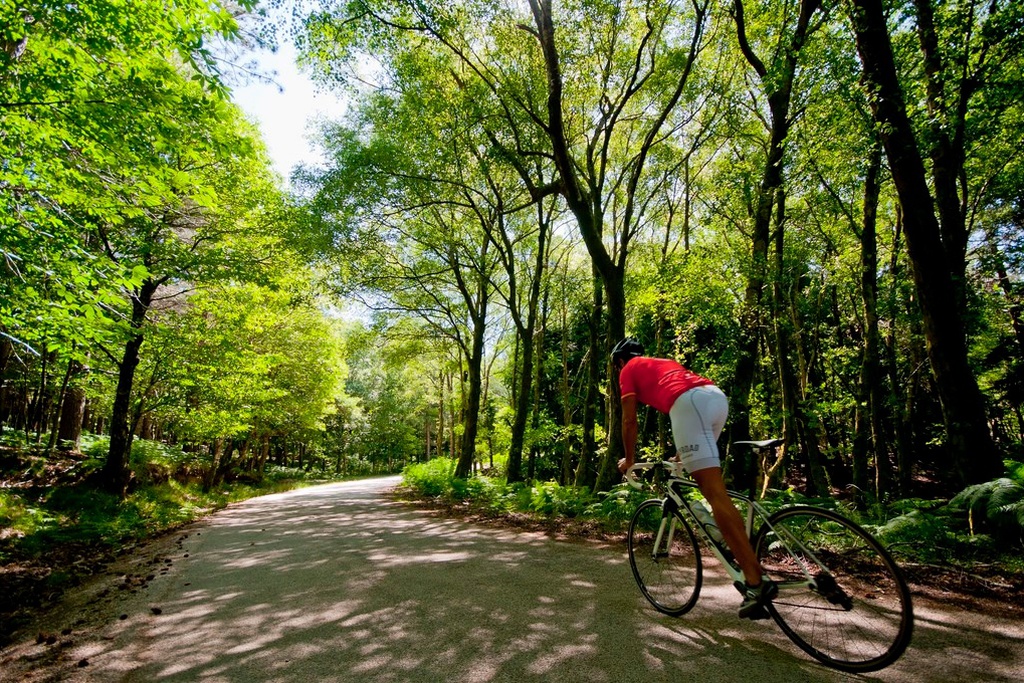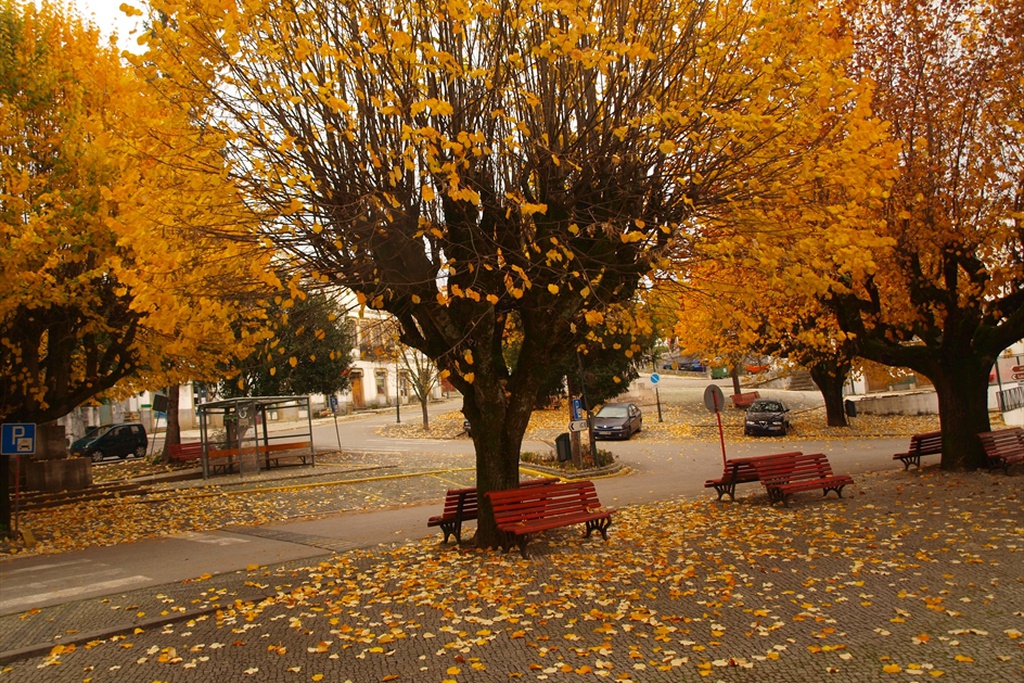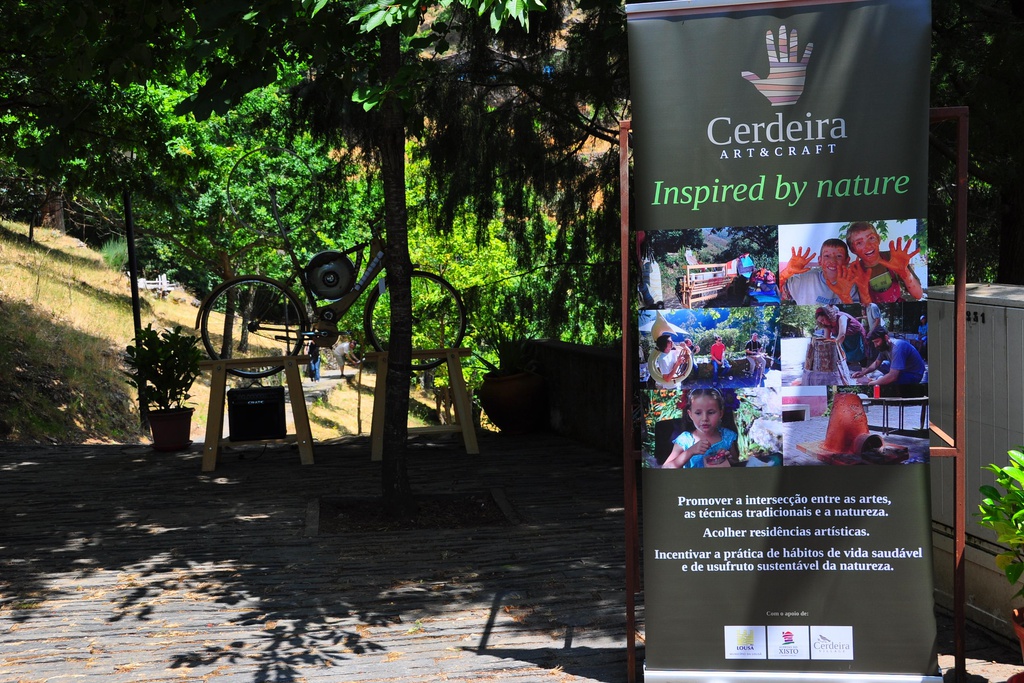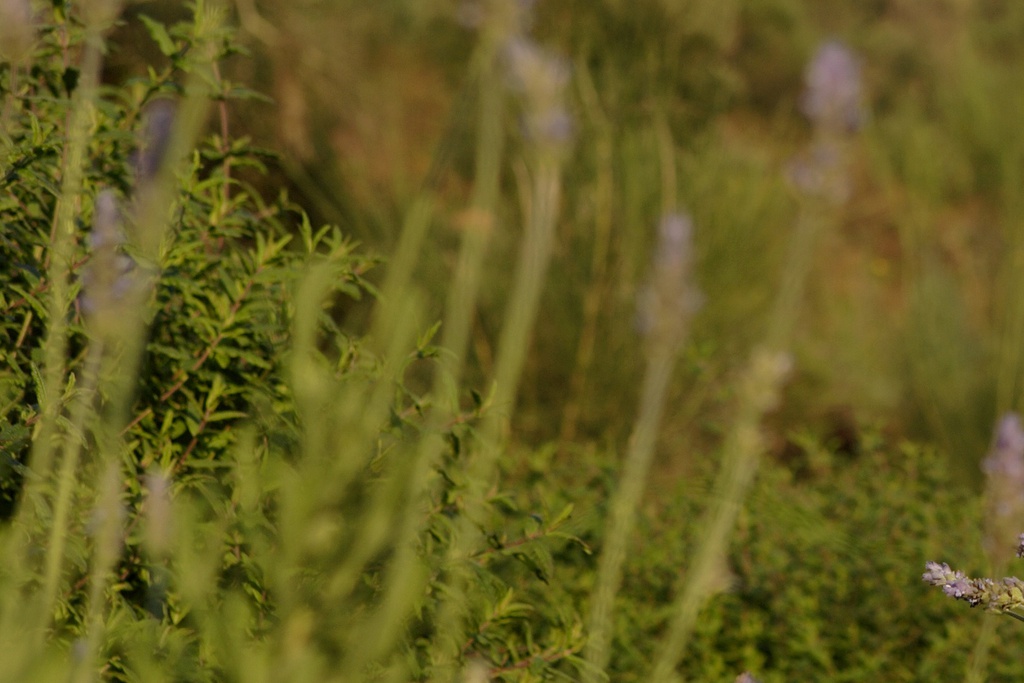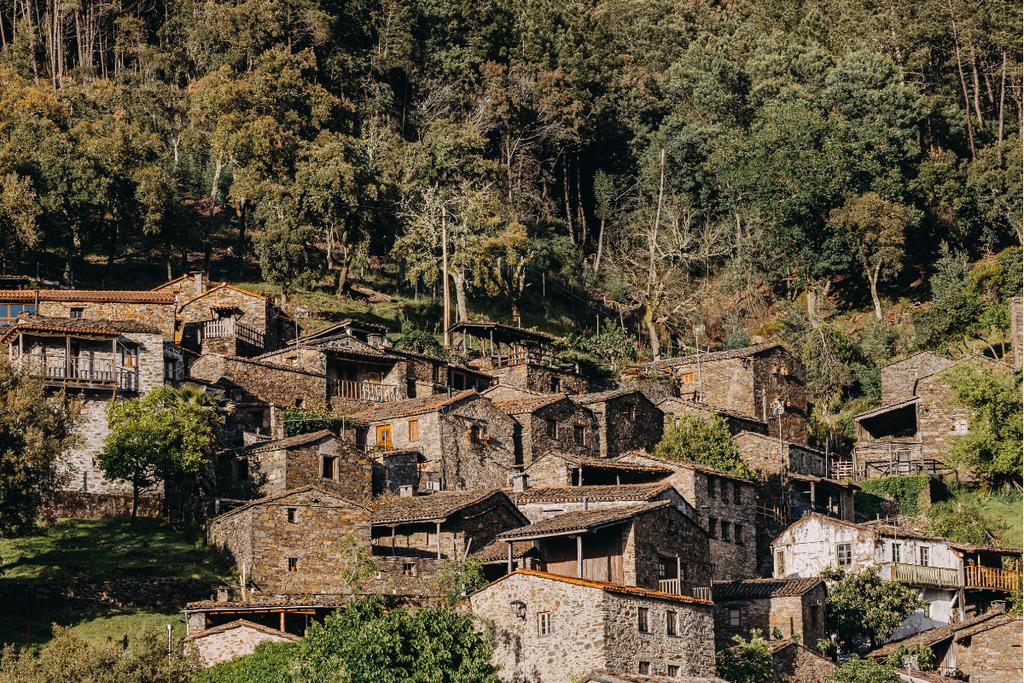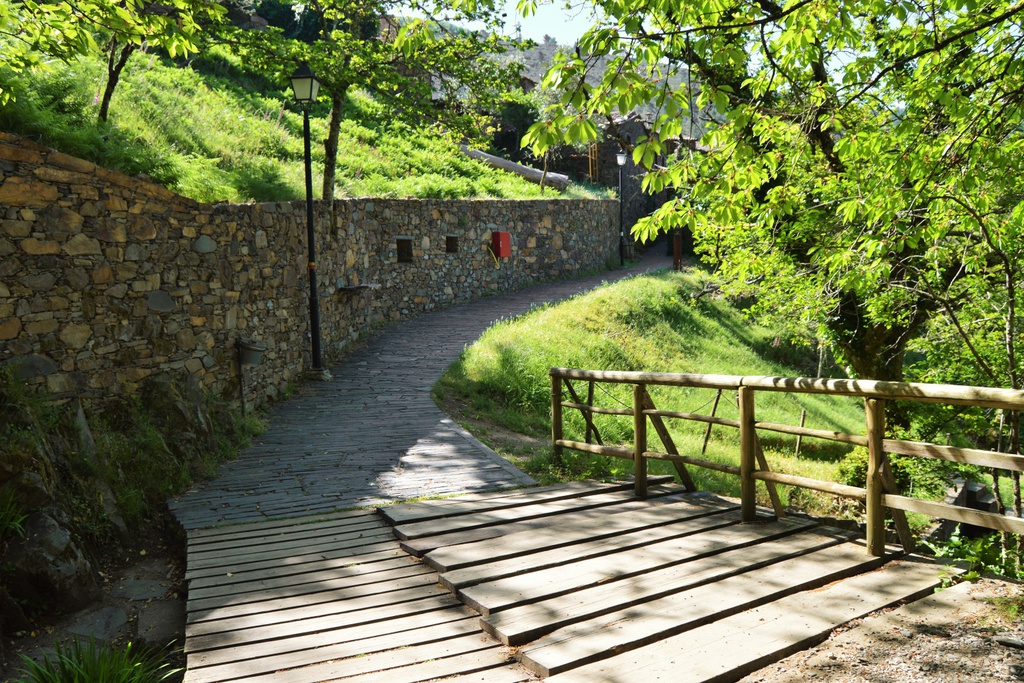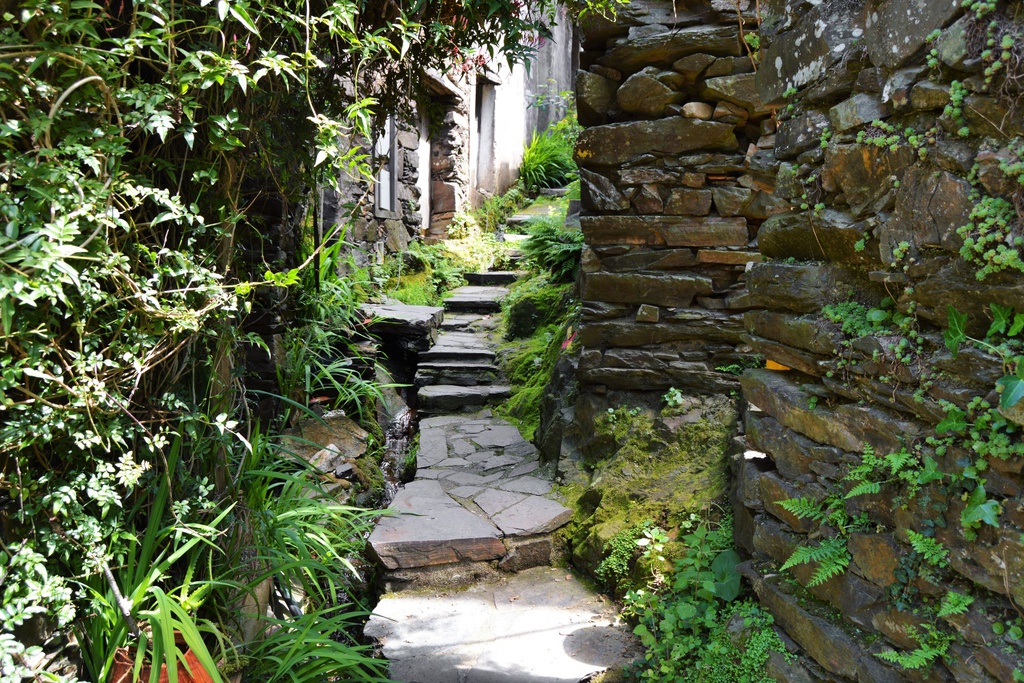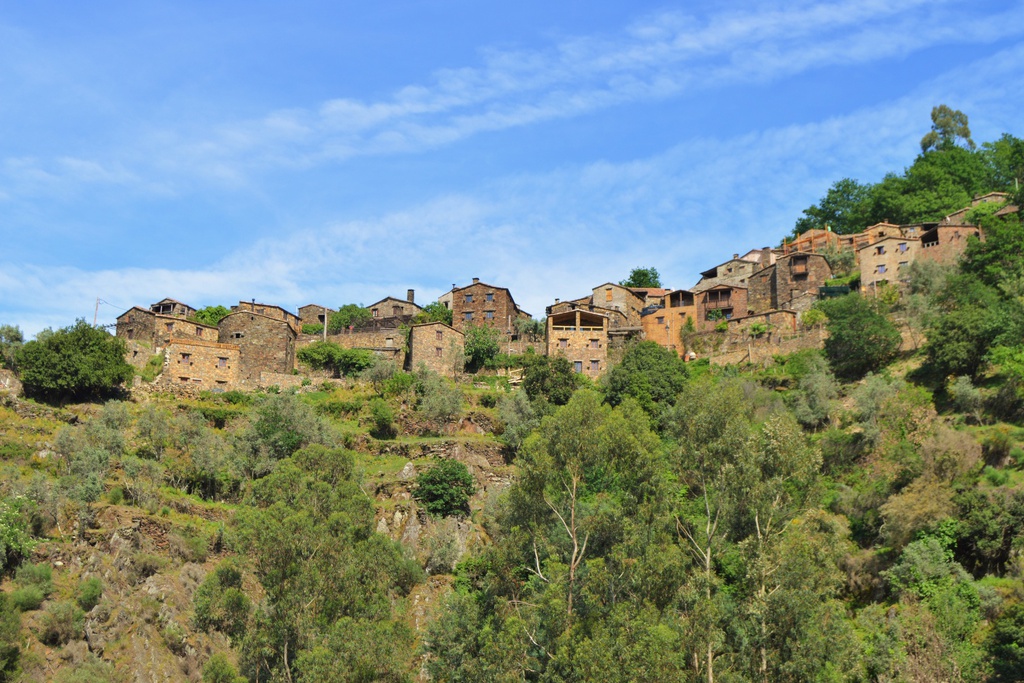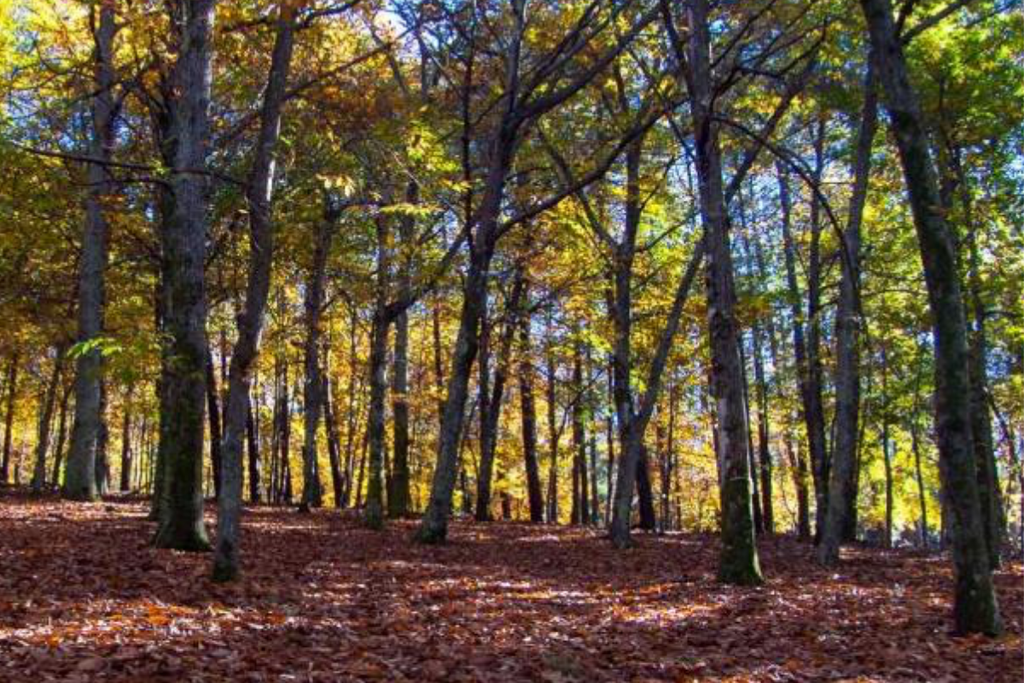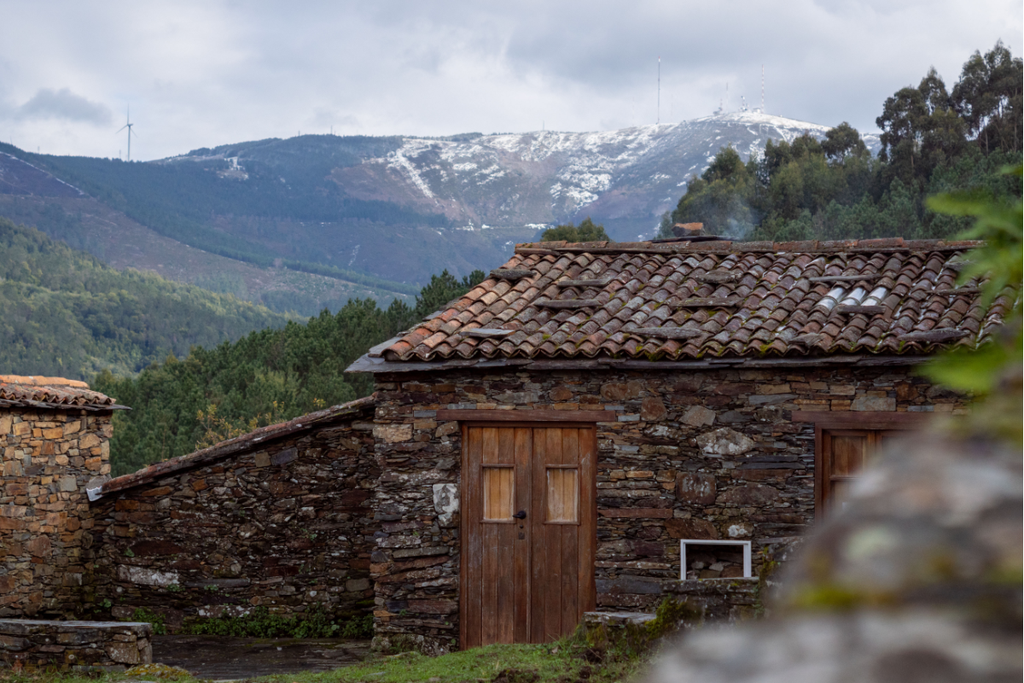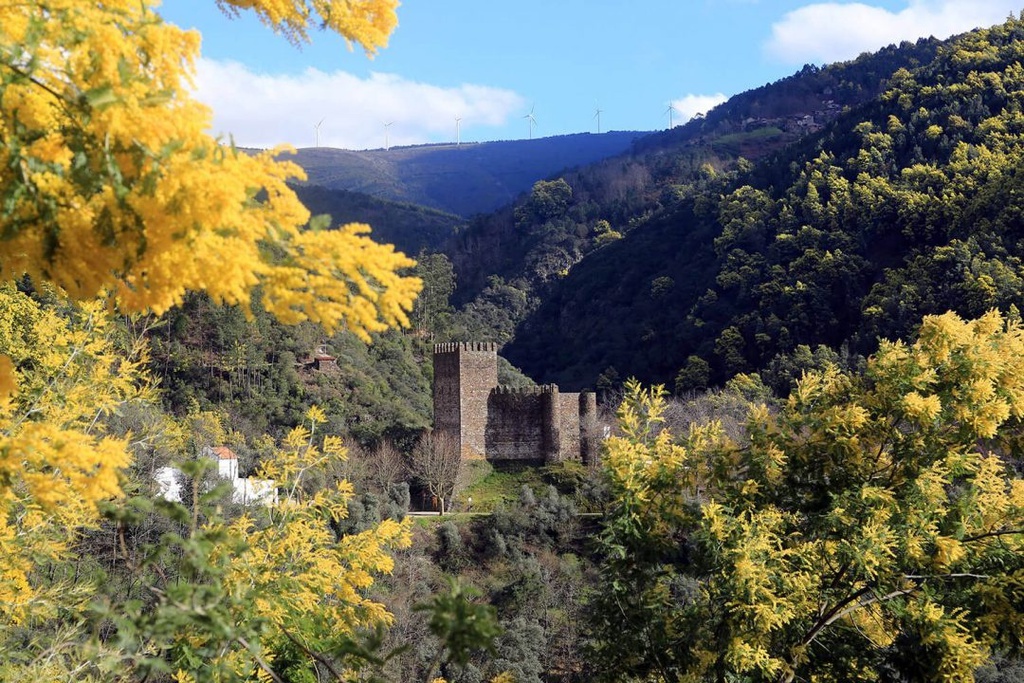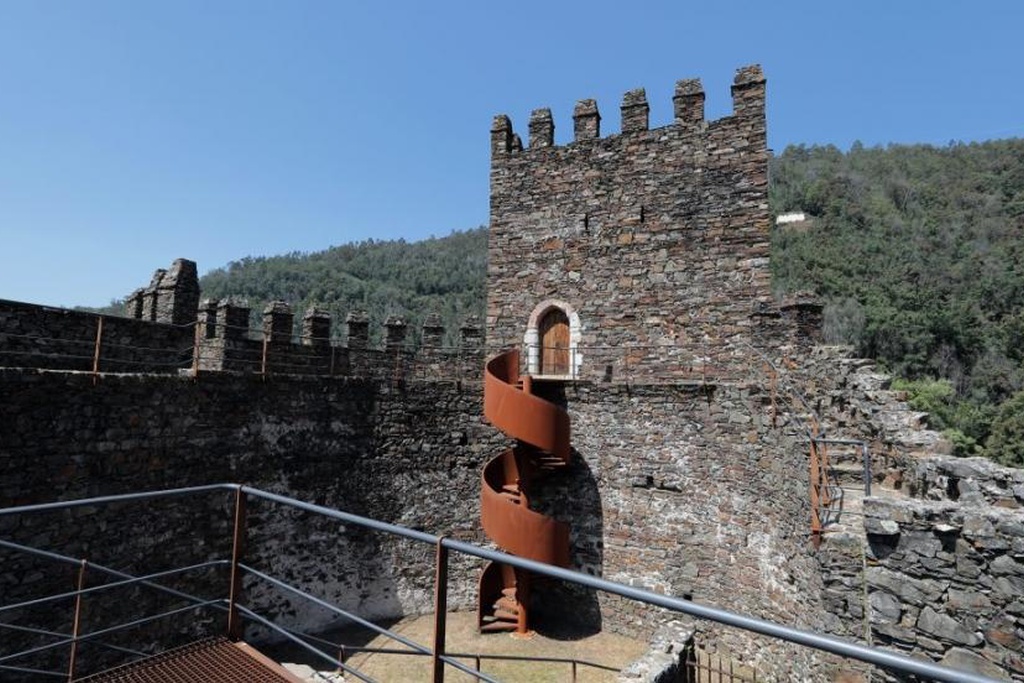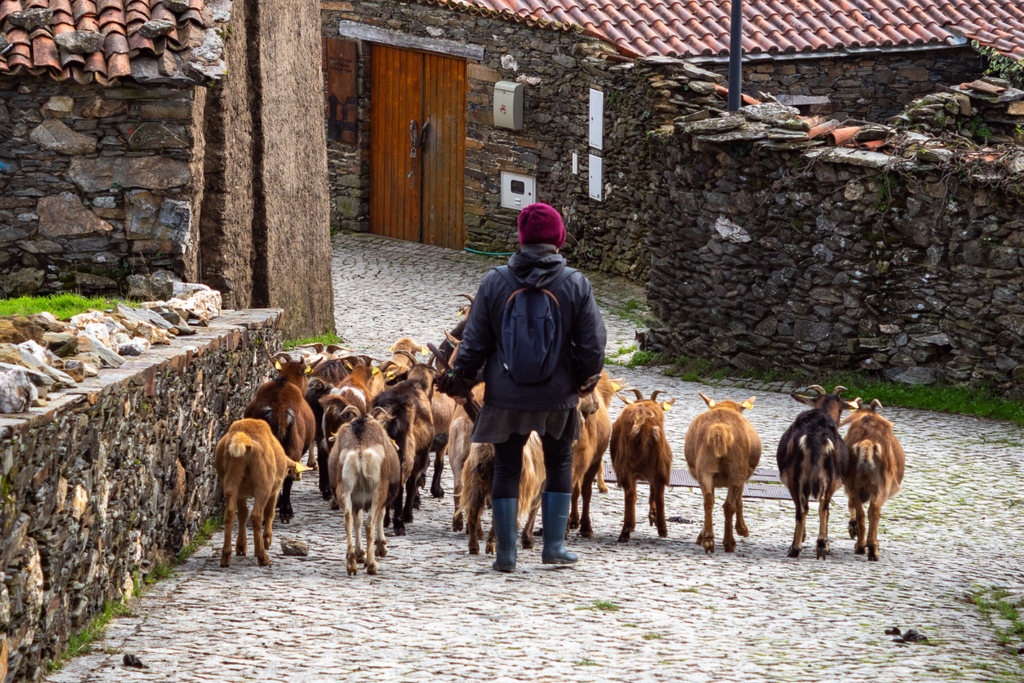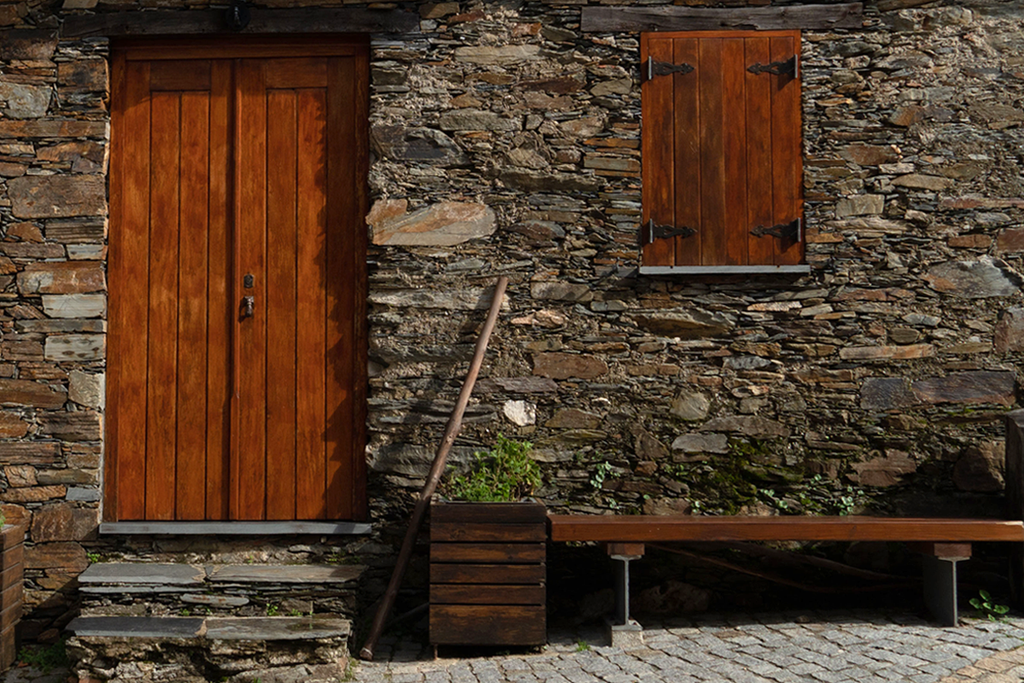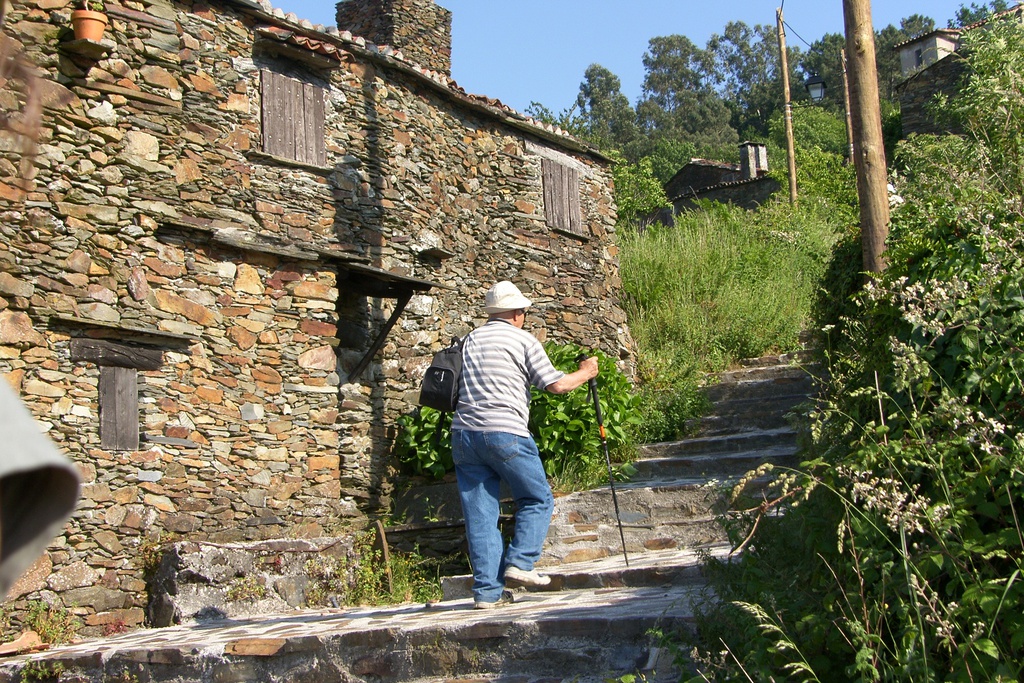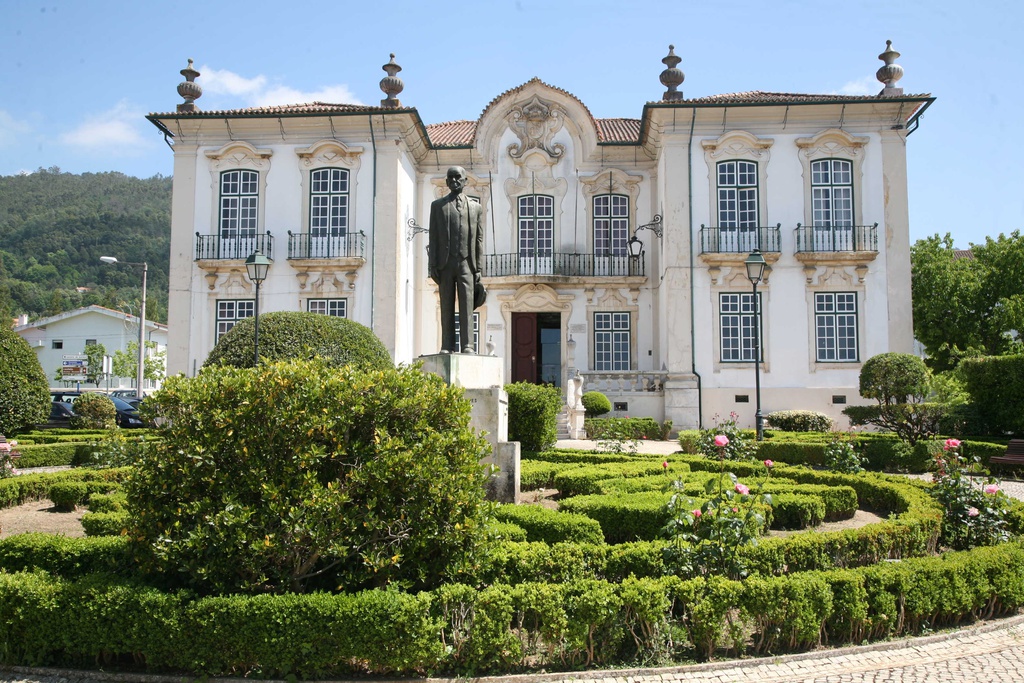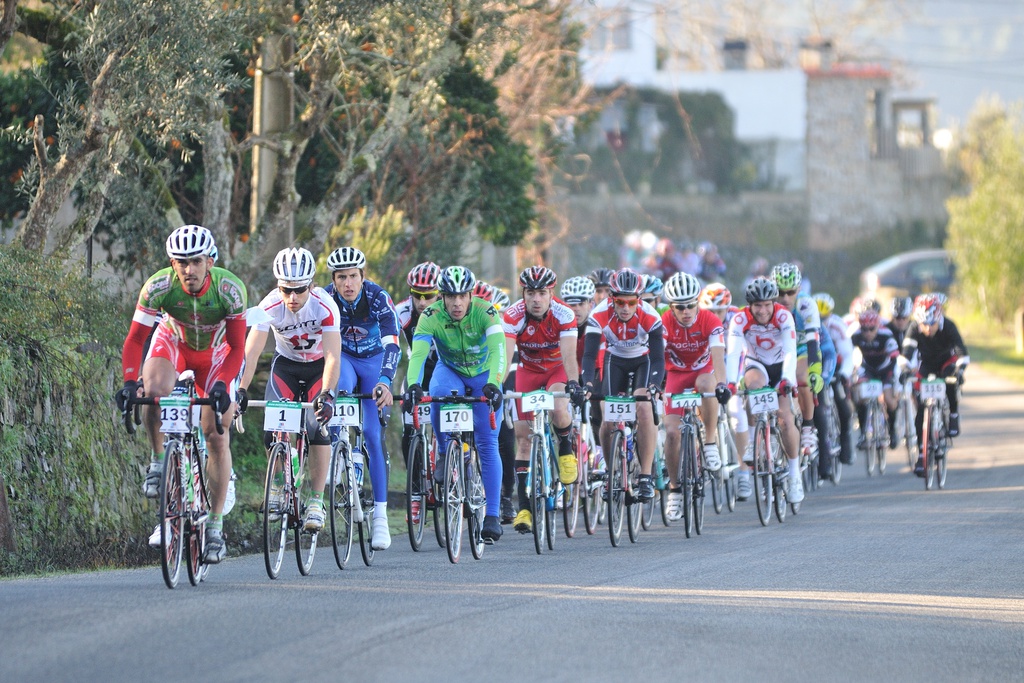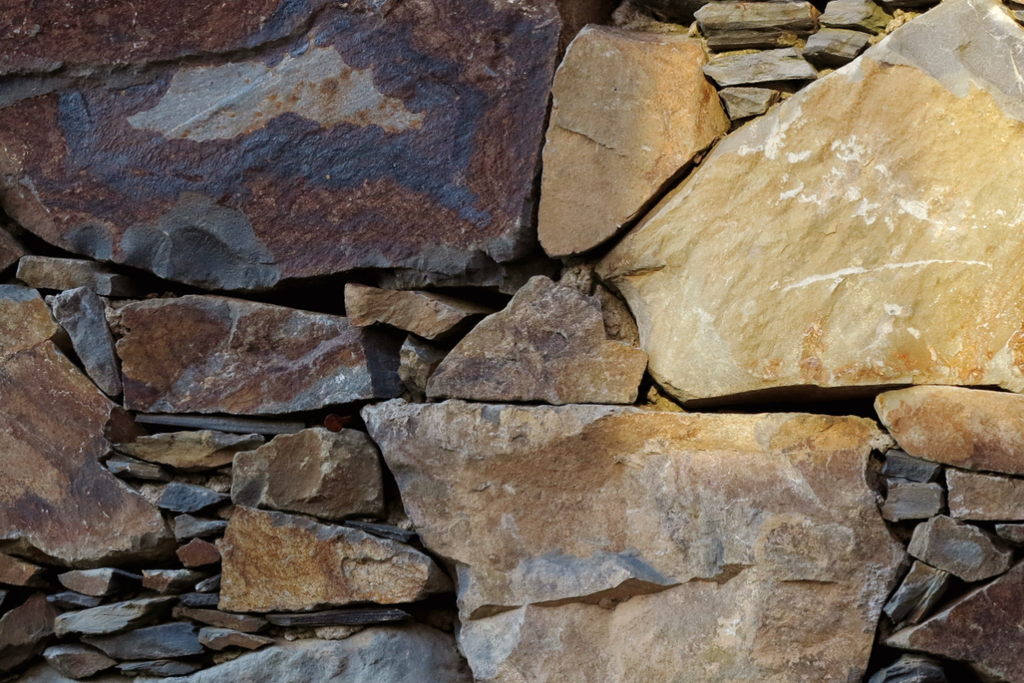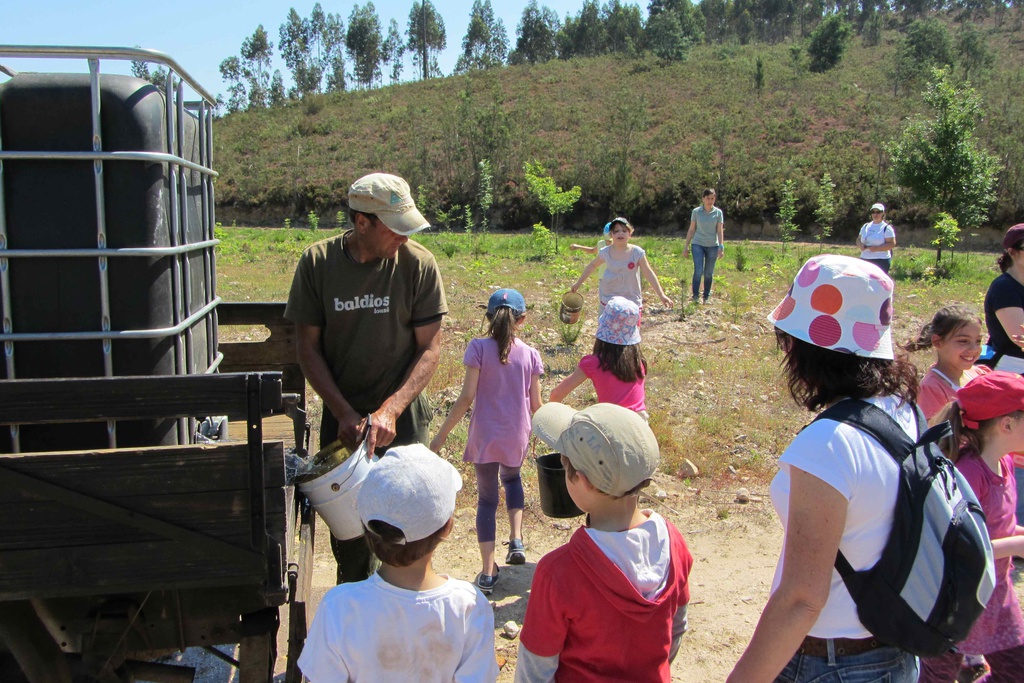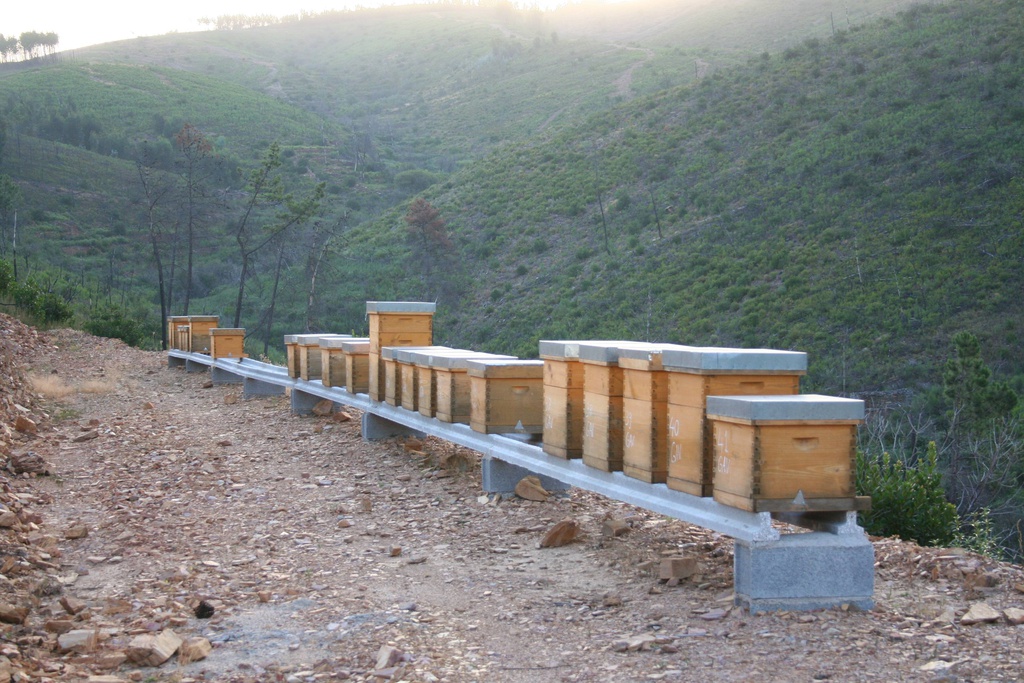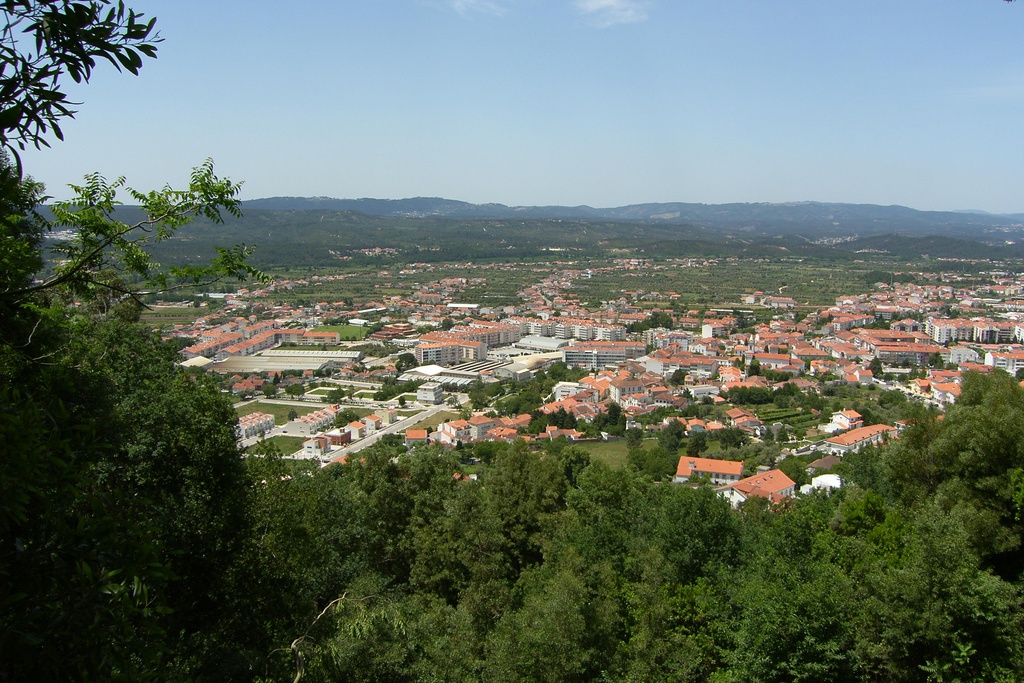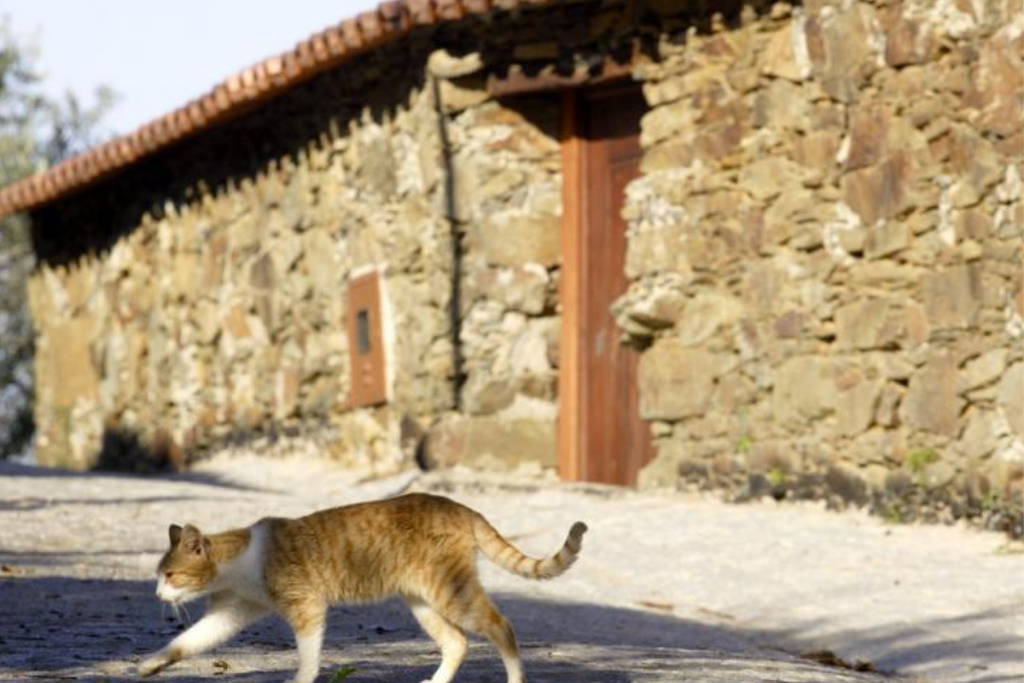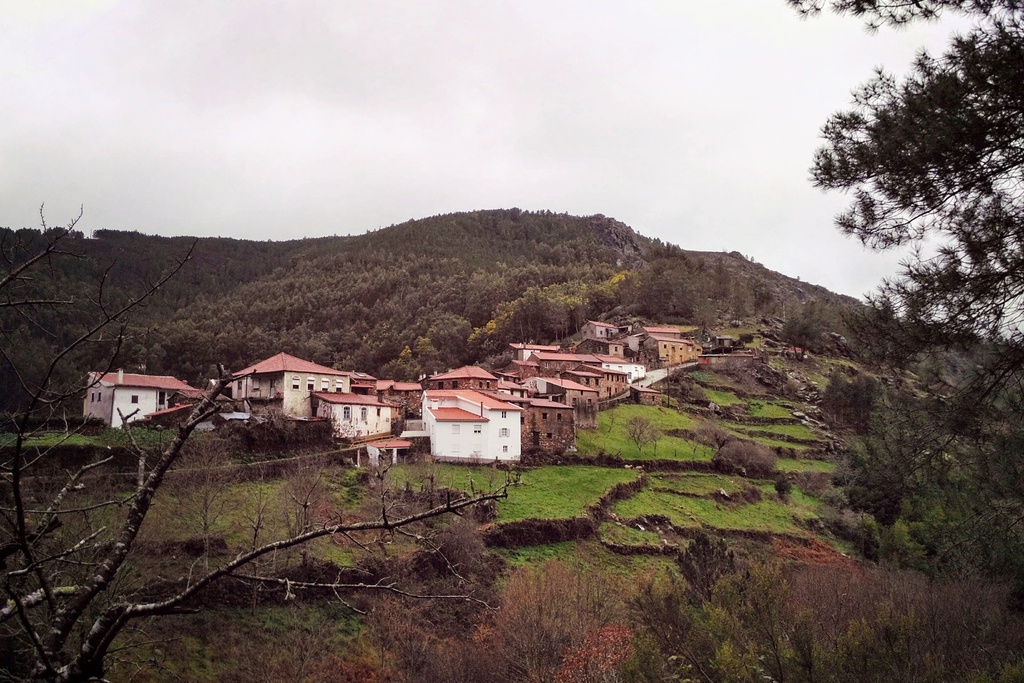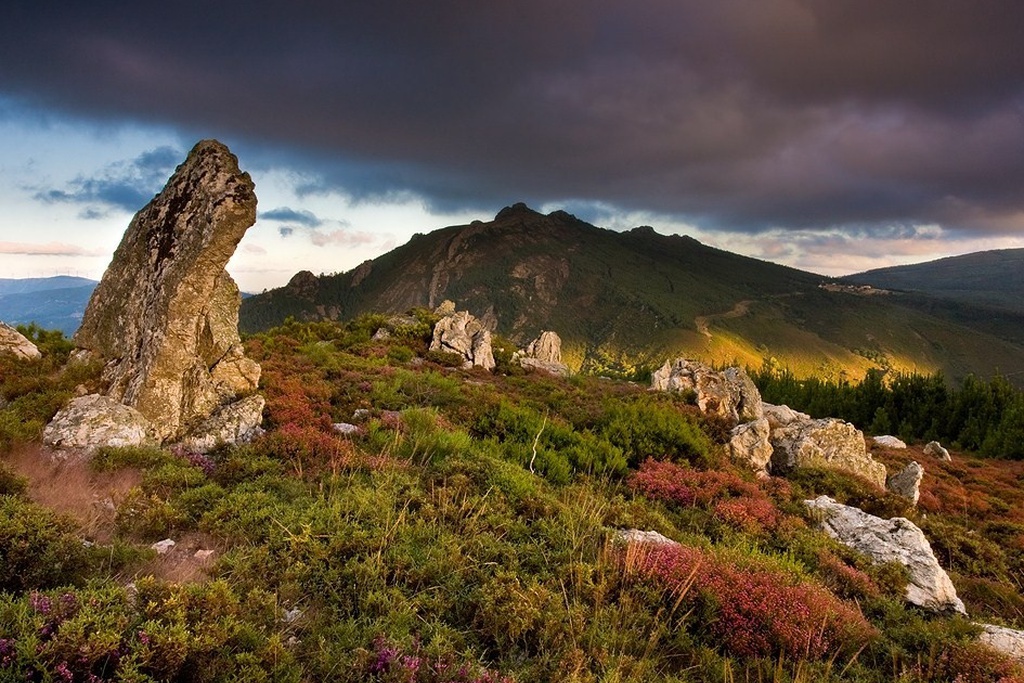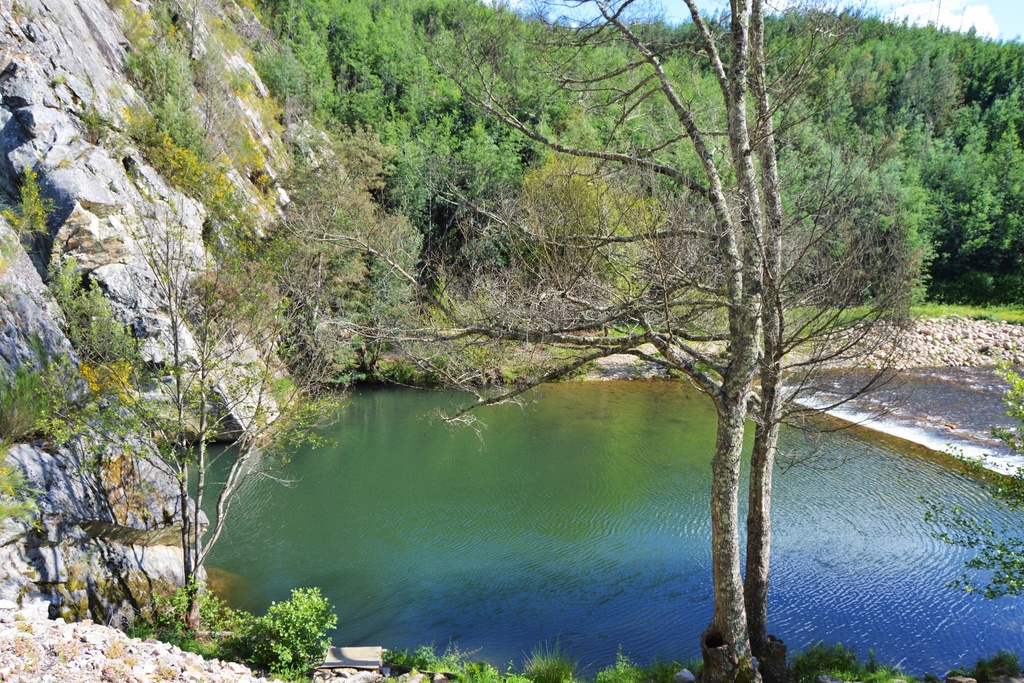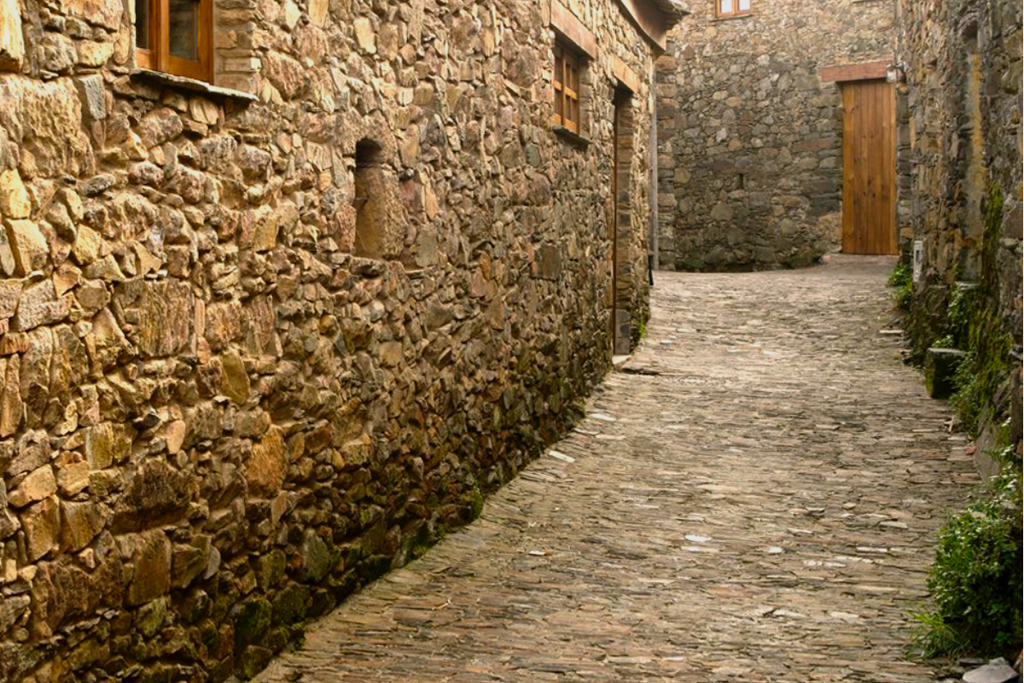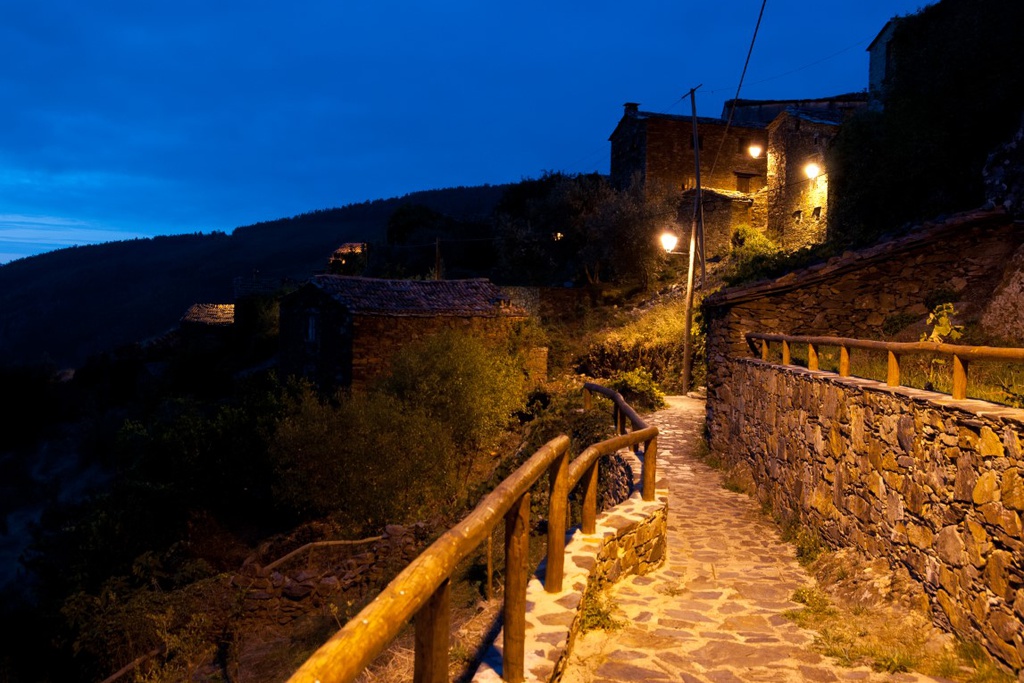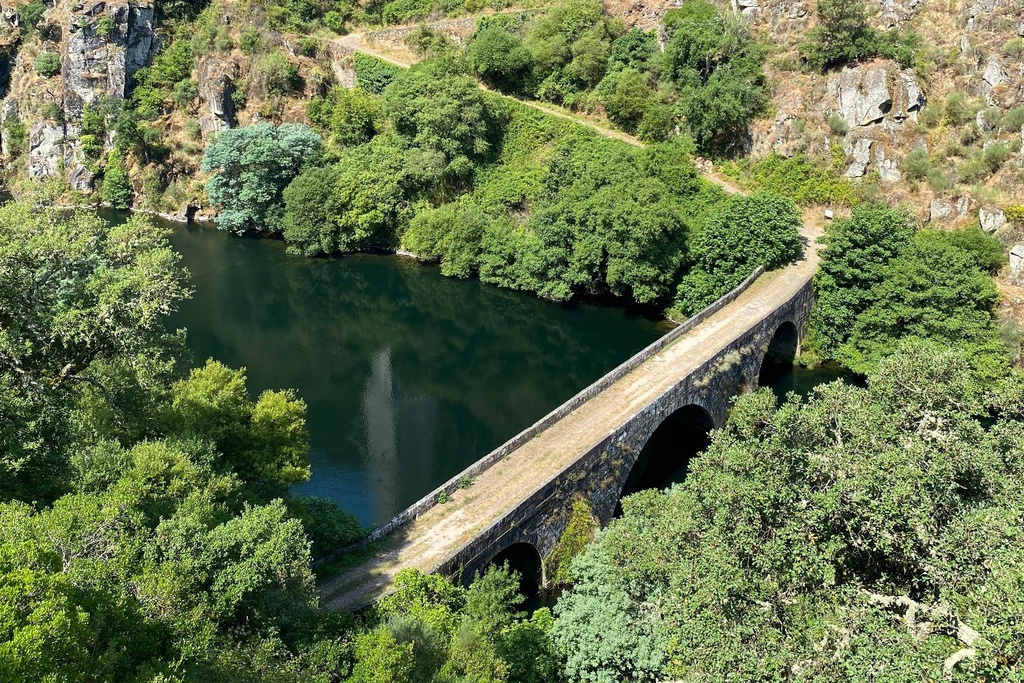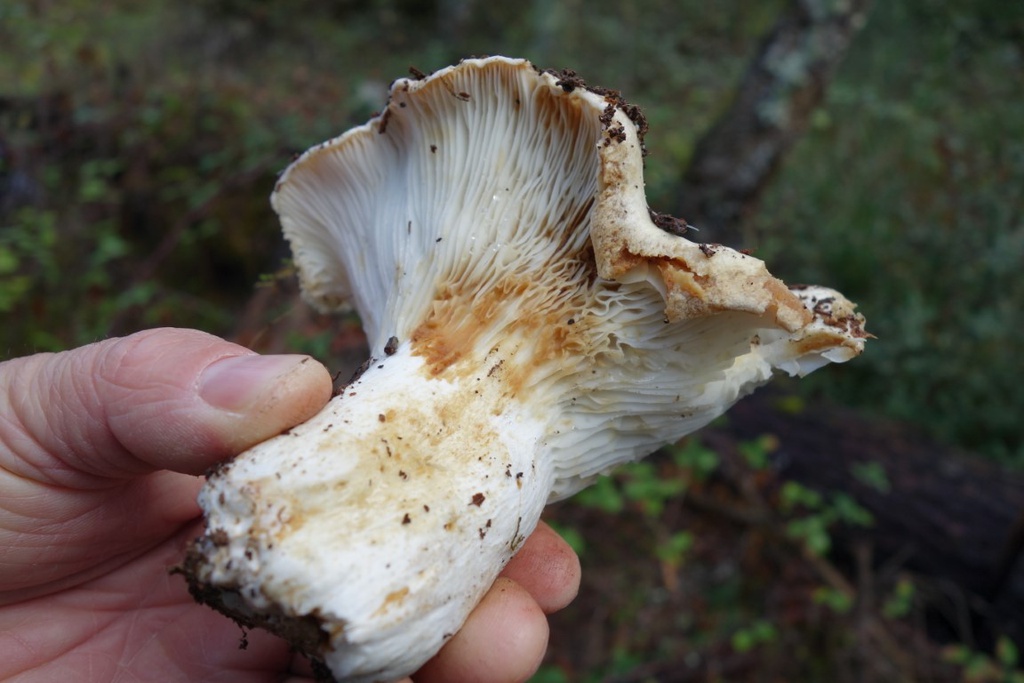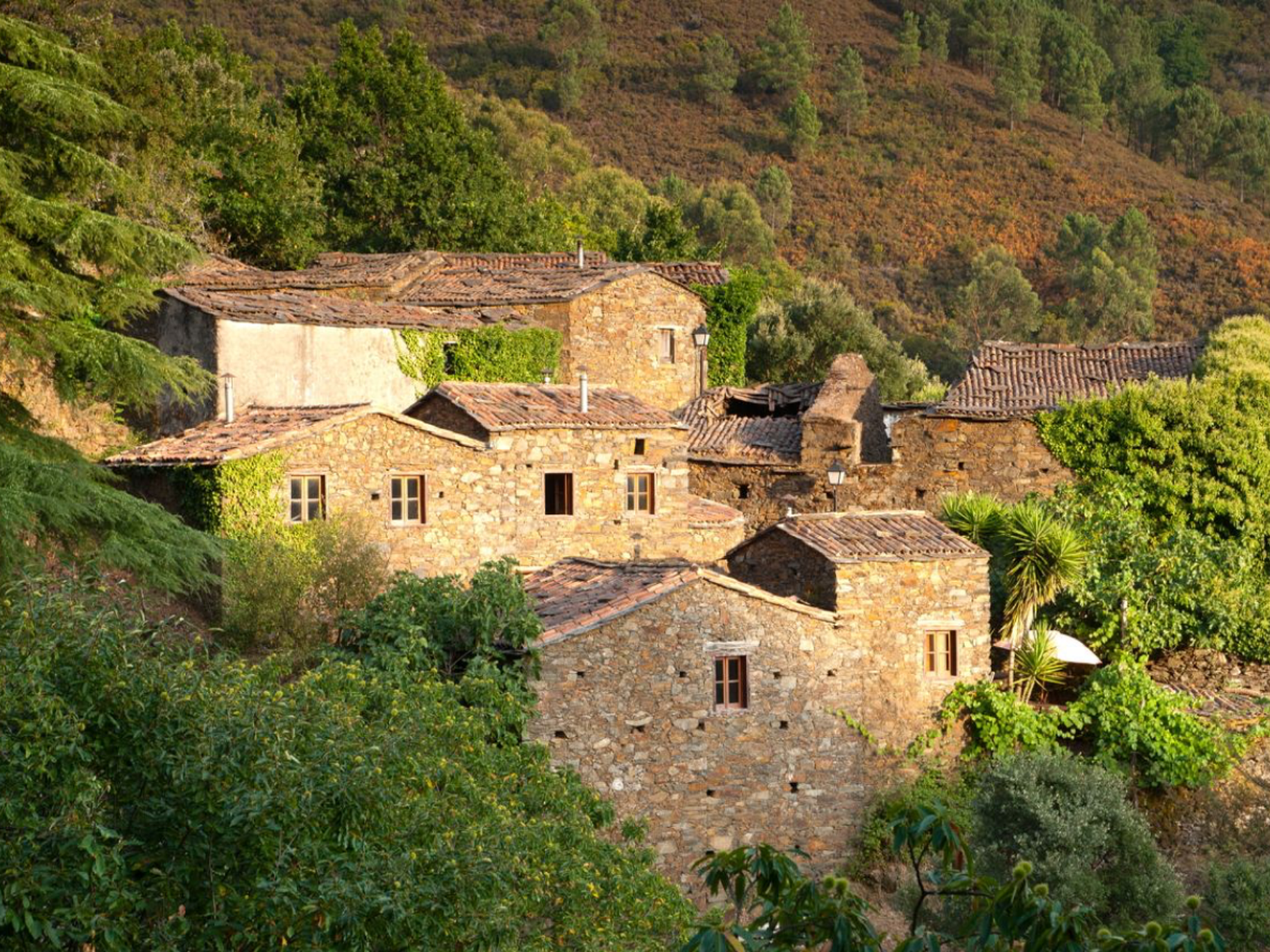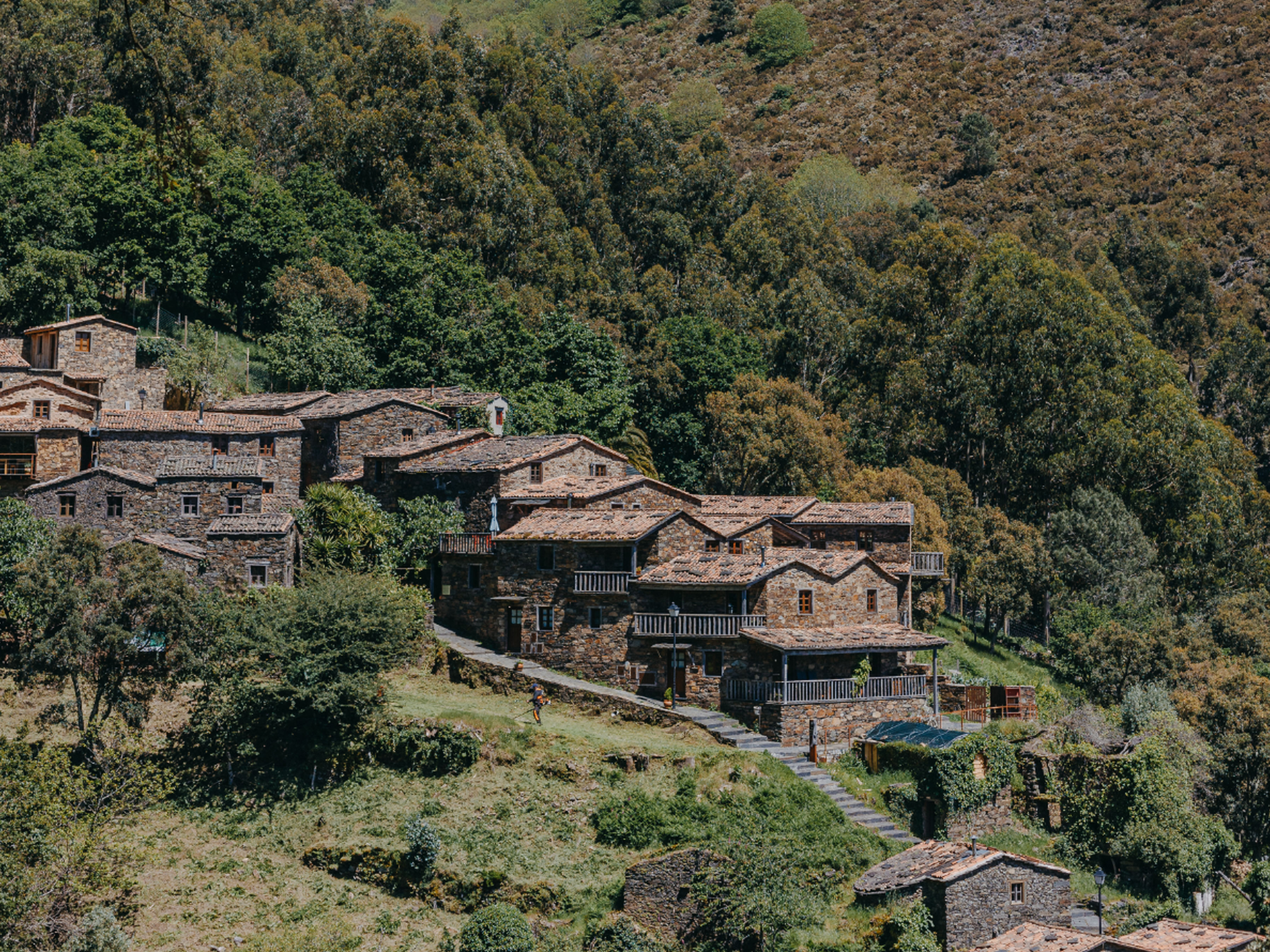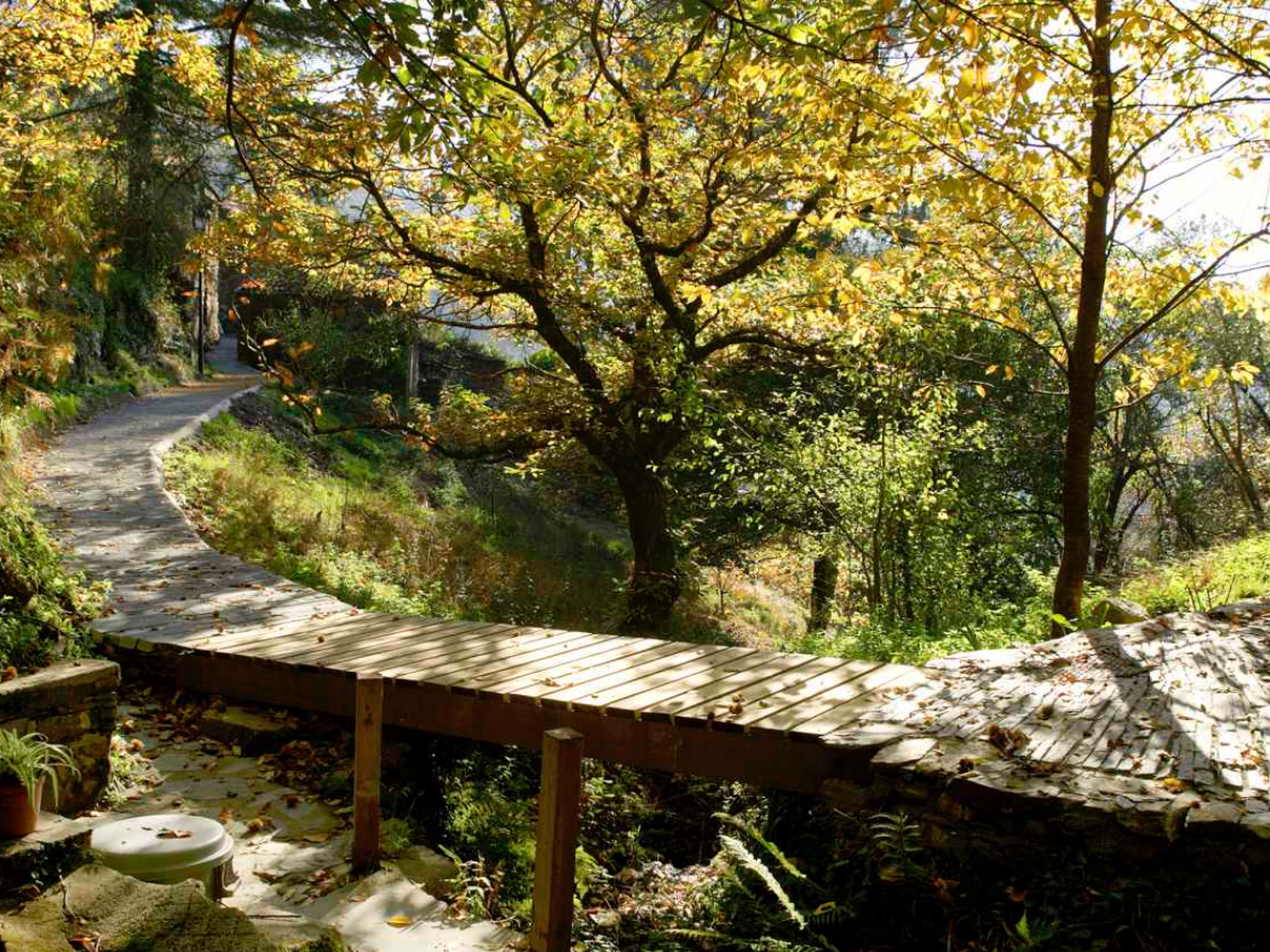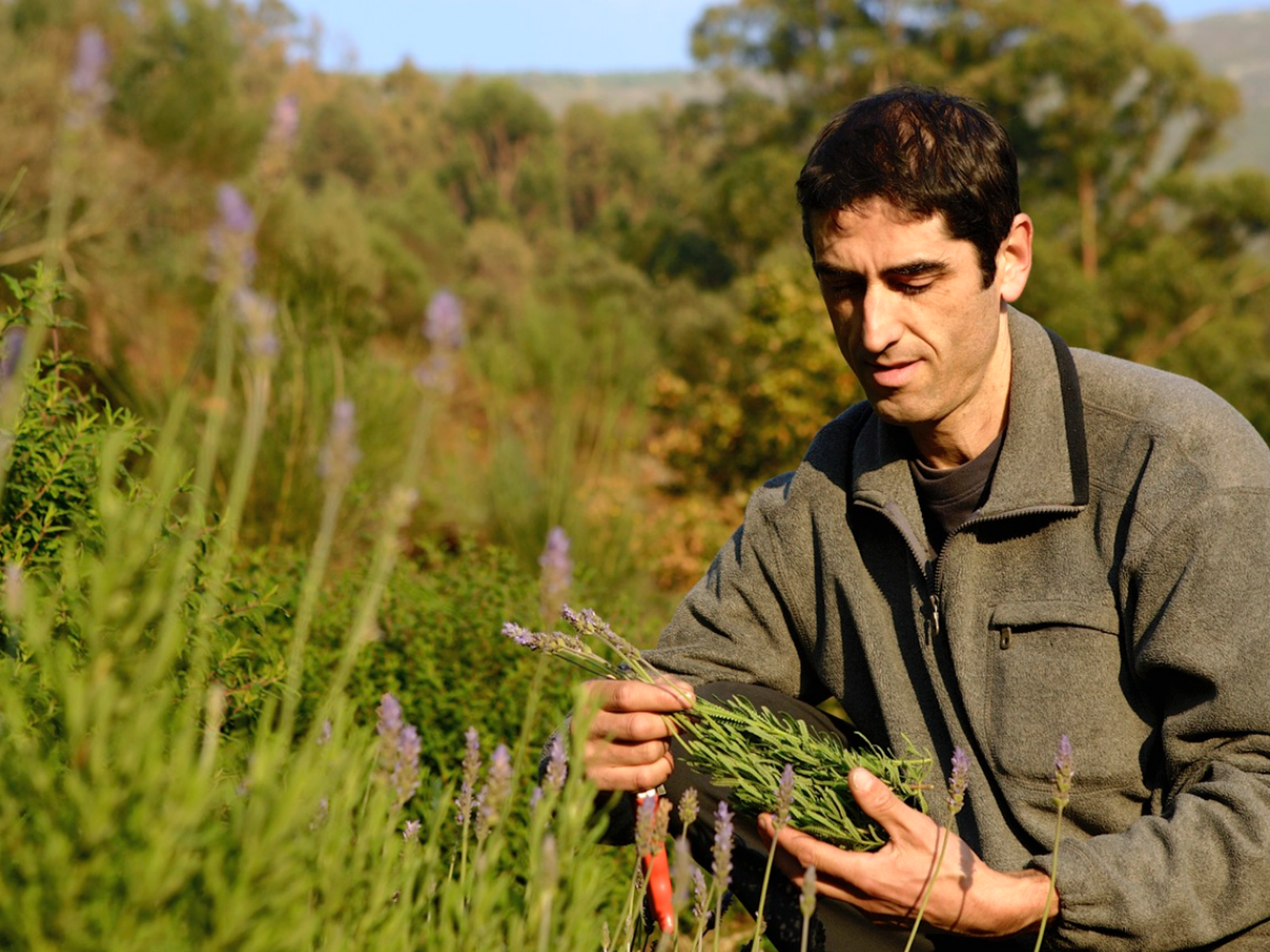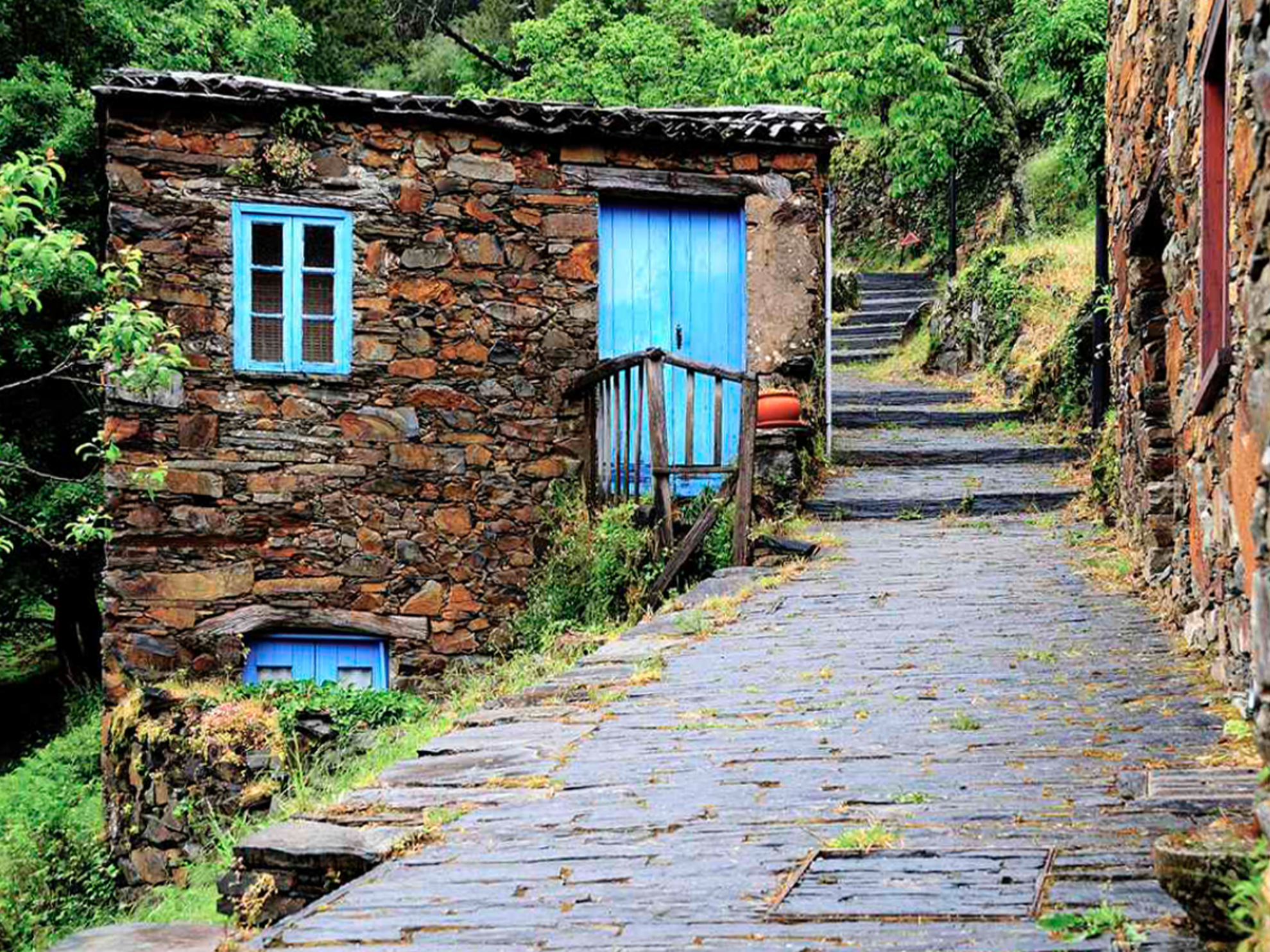As we enter Cerdeira, going down to the little brook, we are struck by the higgledy-piggledy buildings. The dominant tone of the schist is juxtaposed with the green of the slopes, the blue of the sky and the white of the clouds.
The inhabitants of this and other villages must have attended the university of the mountains. The houses were built on a rocky hillside to avoid occupying the scarce flatter areas, which were given over to agriculture. A work of engineering surrounded the village with a staircase of terraces holding back the soil that rain and erosion carried down the slope. The siting and the architecture of the buildings seems to follow a plan that aims to astound twenty-first century visitors.
Cerdeira is a magical place. At the entrance to the village, a small bridge leads us to a handful of houses peeping through the foliage. It seems like we are crossing the portal to a fantasy world. Everything appears perfect in this deeply romantic setting. The slate path points the way to a spring hidden among lush vegetation.
Between steep slopes rent by watercourses tumbling down from higher up, Cerdeira nestles in the most bucolic of surroundings. This is a village that art and creativity have helped to restructure. It is currently a place of artistic creation, through international artistic residencies, training workshops and small creative experiences. In short, a place for creative retreats and of well-being, taking advantage of its natural richness, of the silence and of all the developed infrastructures: the lodgings, the School of Arts and Crafts, the ateliers, the Library, the Gallery, the community oven, the Café da Videira and the Taberna das Artes.
Every year in July, the village hosts the festival Elementos à Solta – Art meets Nature, which brings together contemporary creators from different areas and transforms the village into an open-air art gallery, with space for all kinds of artistic expression.




